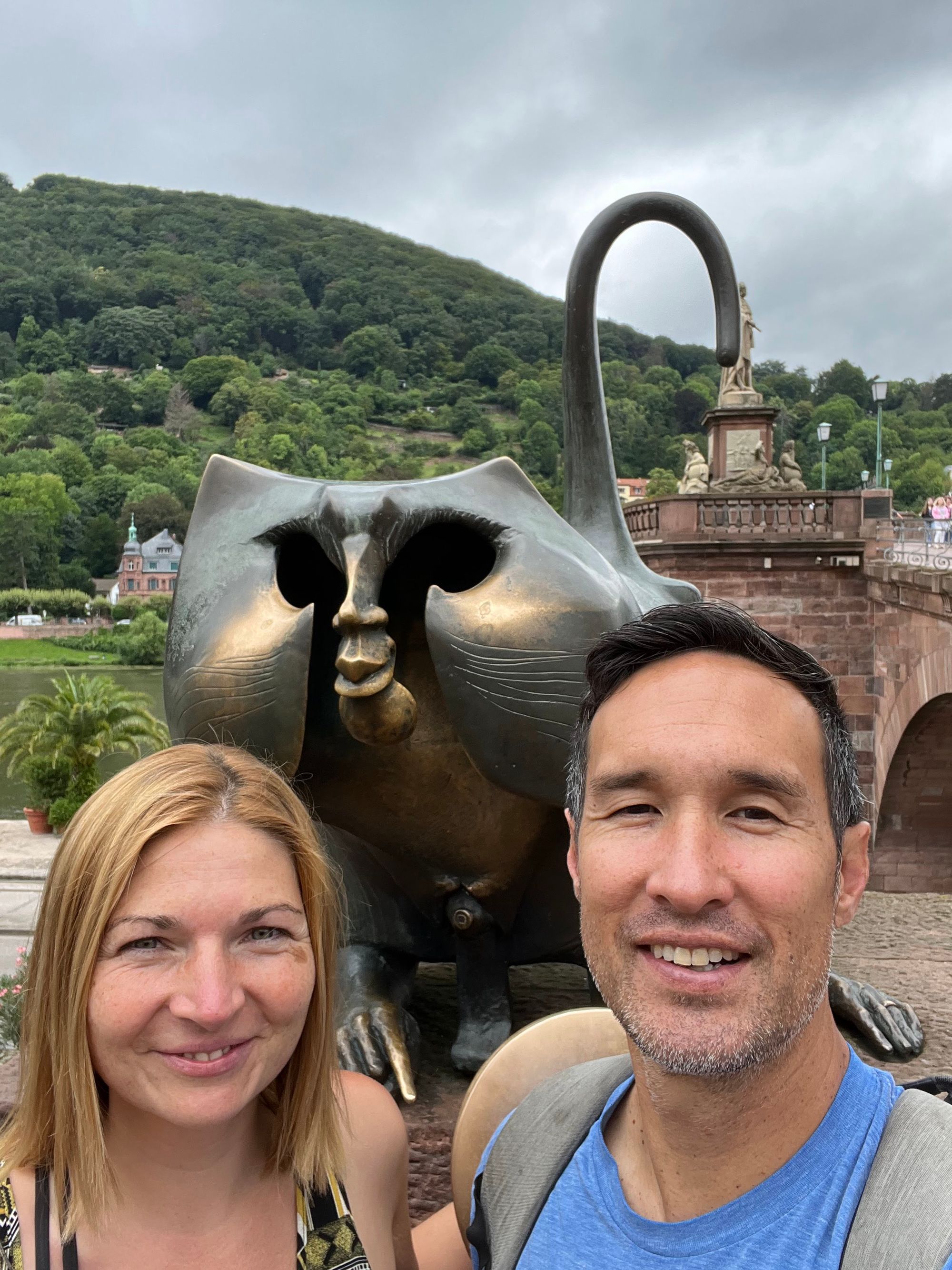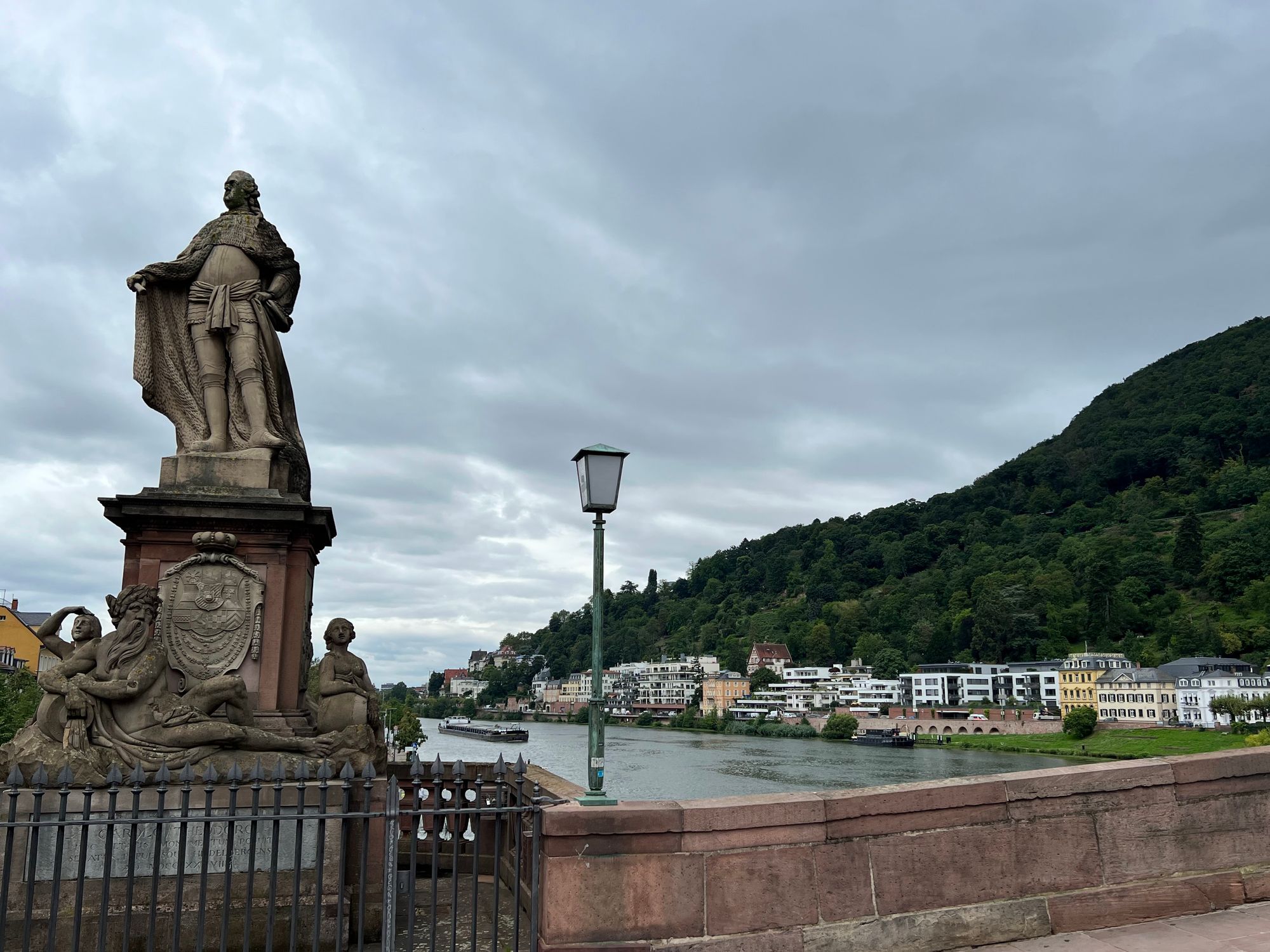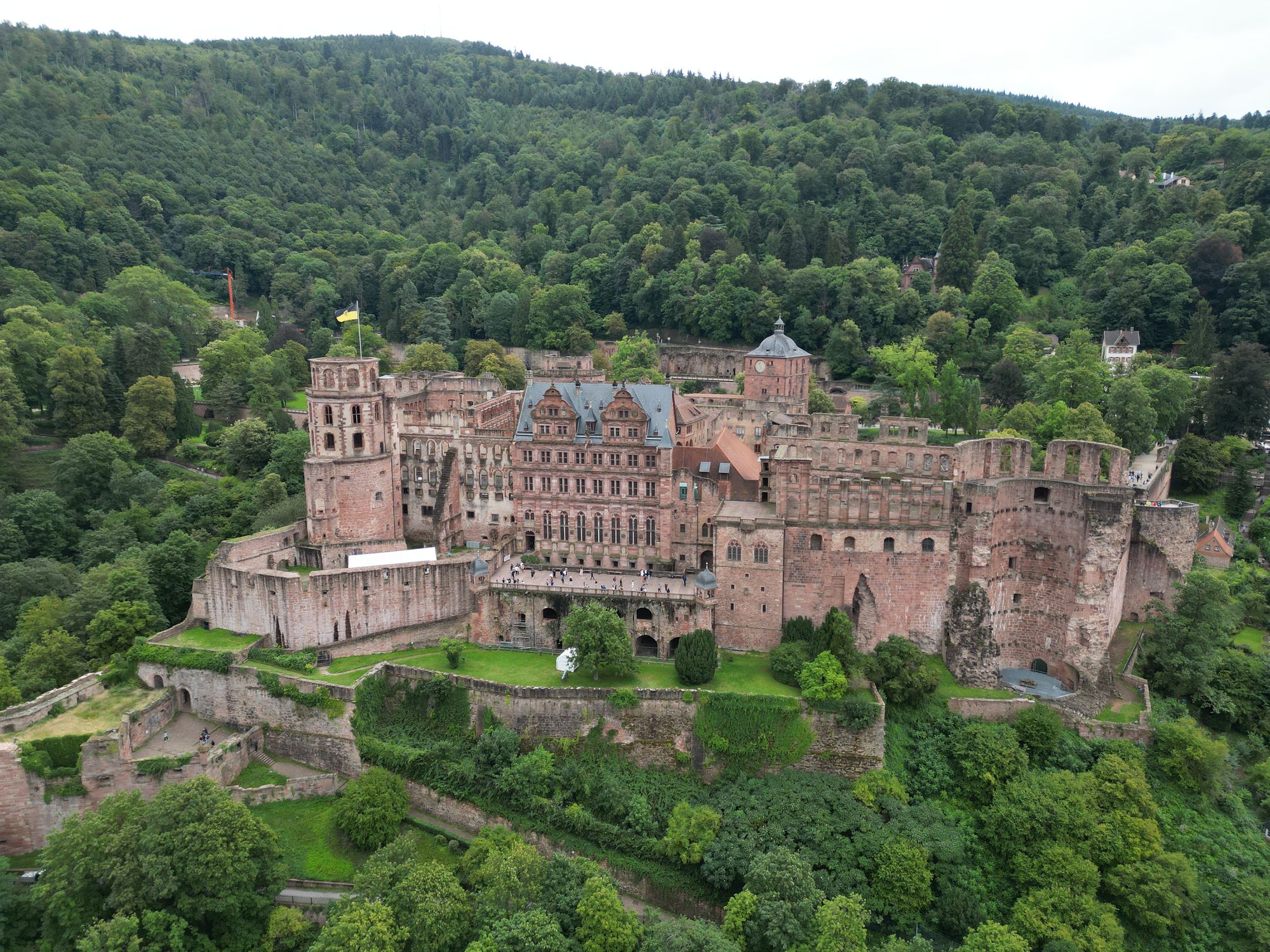Of wine, forbidden love, and death by water
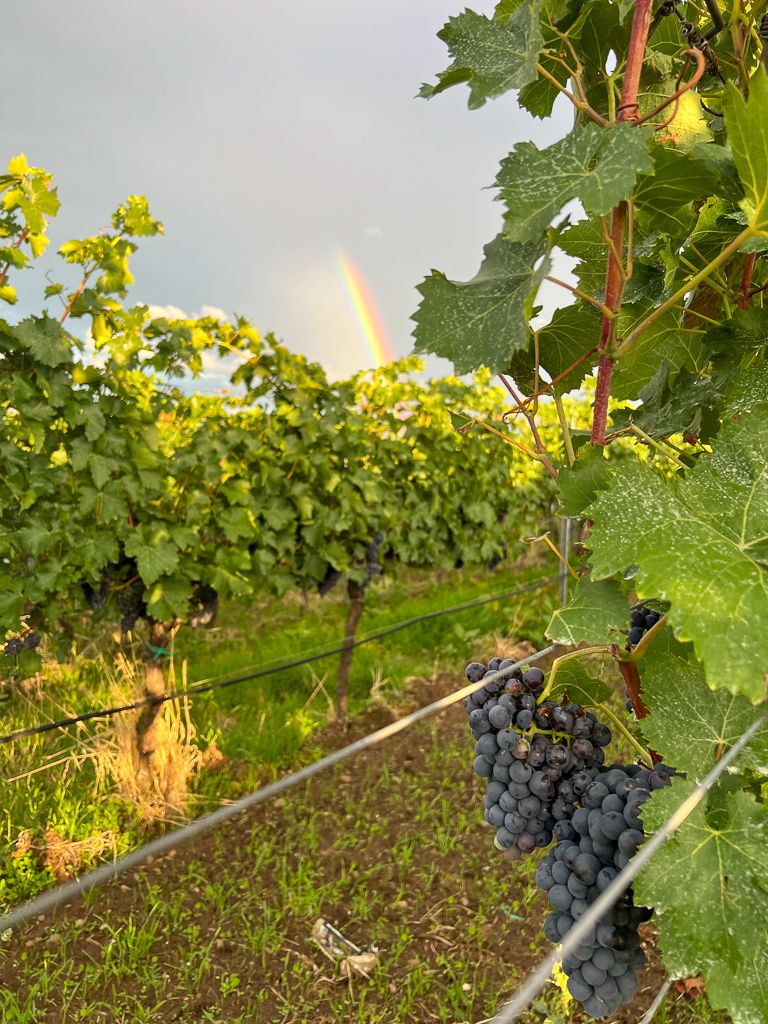
The southwest of Germany (consisting of the western and eastern regions along the Rhine) might not be the wine capital of the world, but it must be a close second. It is hard to imagine these areas without wine: they live and bleed wine, and the influence of this tasty beverage is embedded in every part of local culture. Overall you can find 3500+ wineries in the Palatinate region alone, where one million grapevines are grown, harvested, and 2.5 million hectoliter (or 660 million gallons) are produced each year.
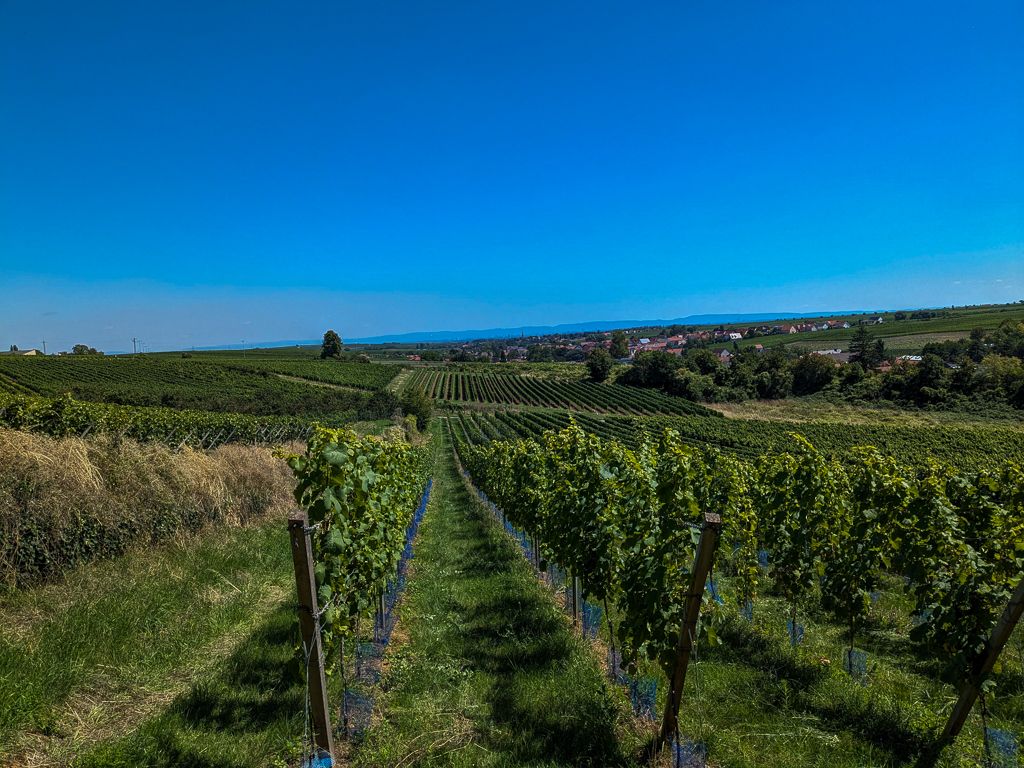
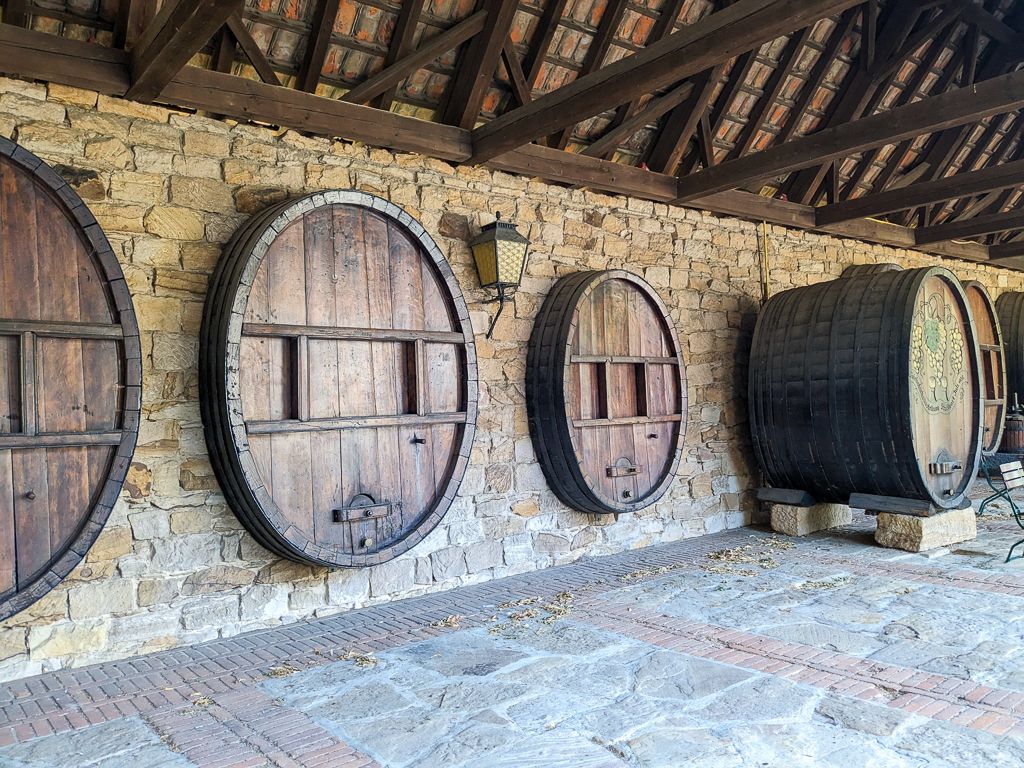
It all starts geographically speaking at the German Wine Gate outside of Wissembourg, the beginning of the infamous Deutsche Weinstrasse (German wine route), a historical 85km (or 53 miles) long drive, bike ride or hike, that takes you along hills and valleys through a sea of vineyards (as far as you can see), and along roughly 140 wineries.
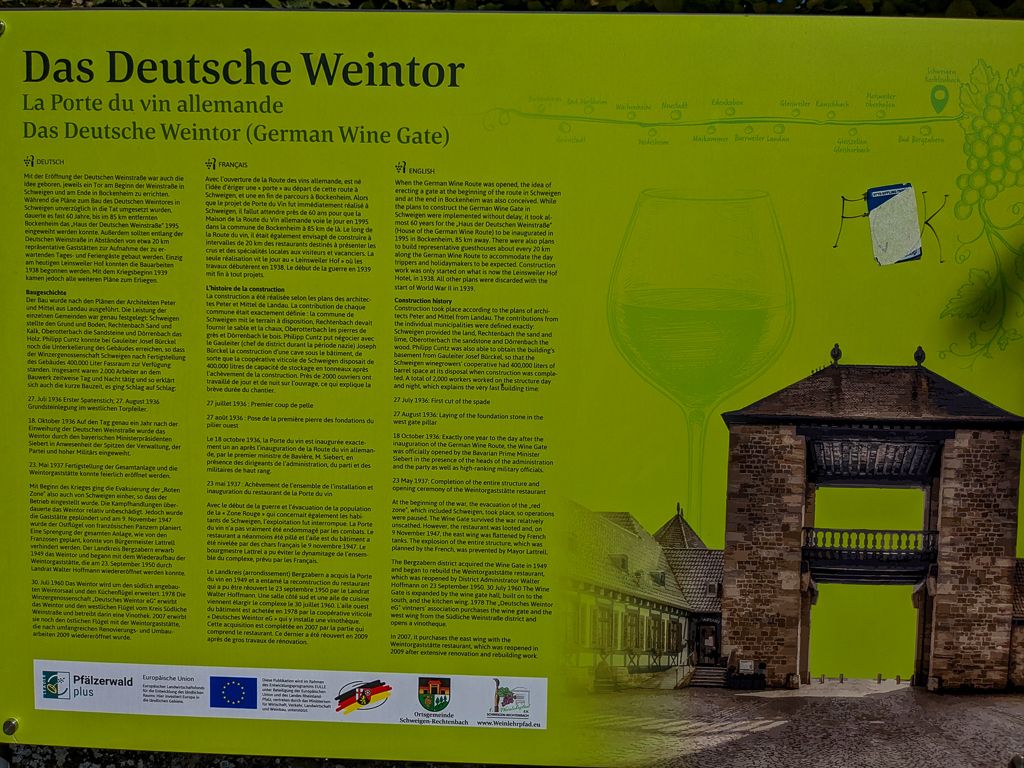
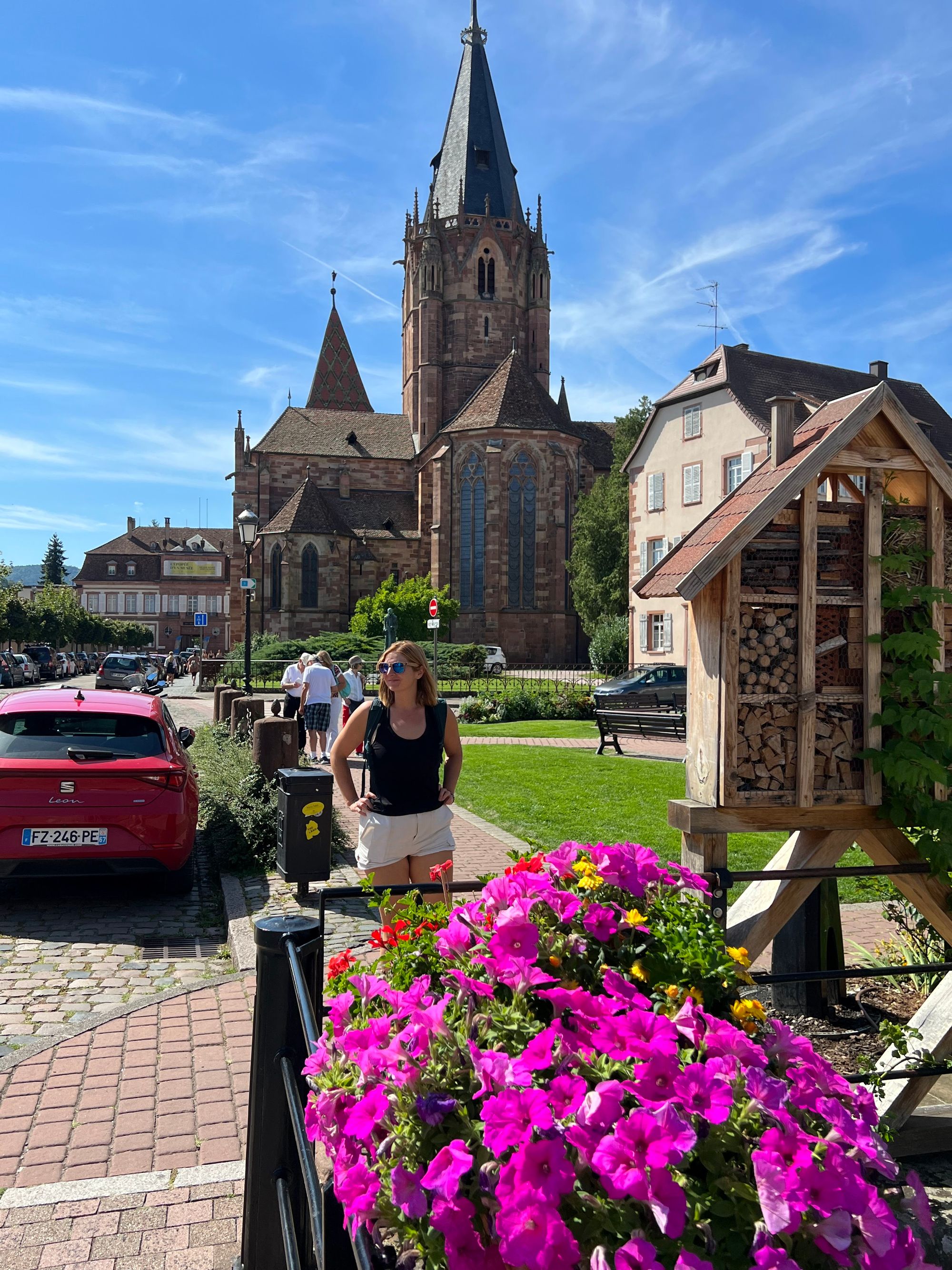
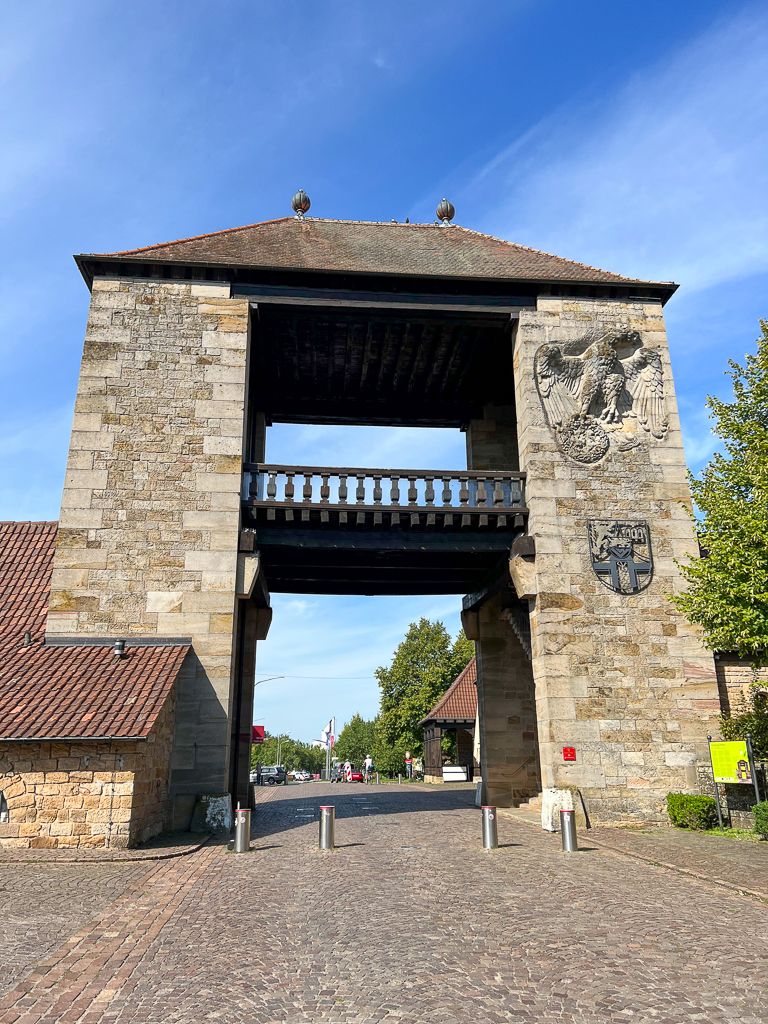
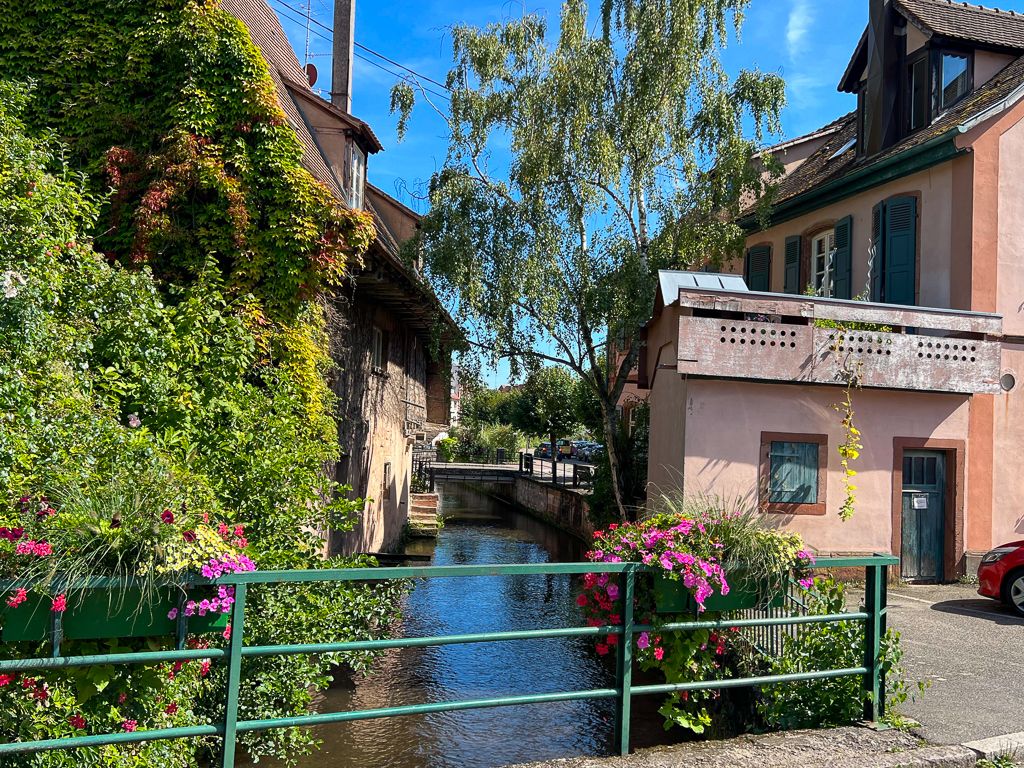
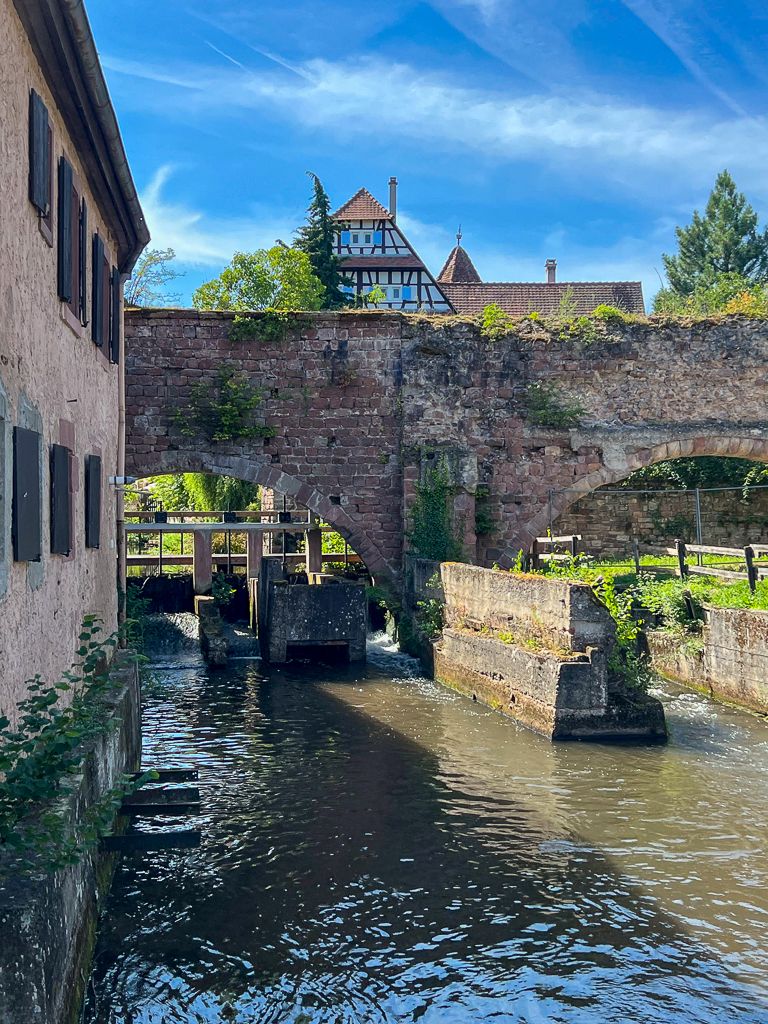
Historically speaking, wine making in this area goes back as far as the Romans, who established small wineries that can still be visited today, laying the foundation for the region's viticulture. Back then, the mild climate and fruitful soil created ideal conditions for growing grapes that yielded flavorful and well-balanced wines.
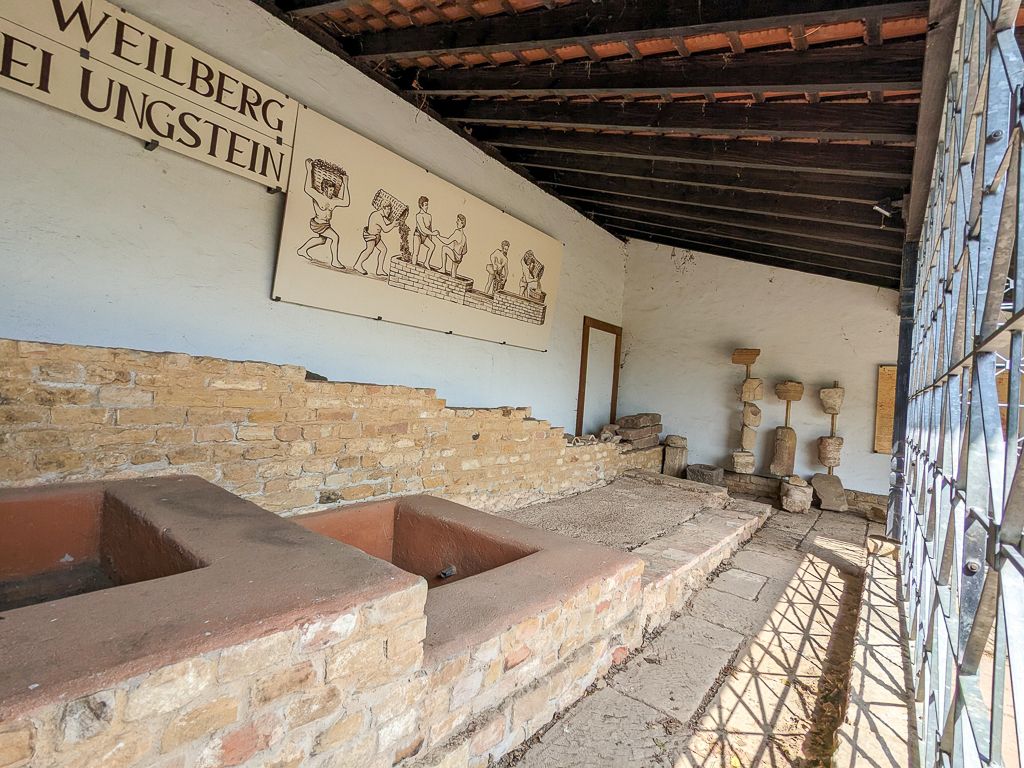
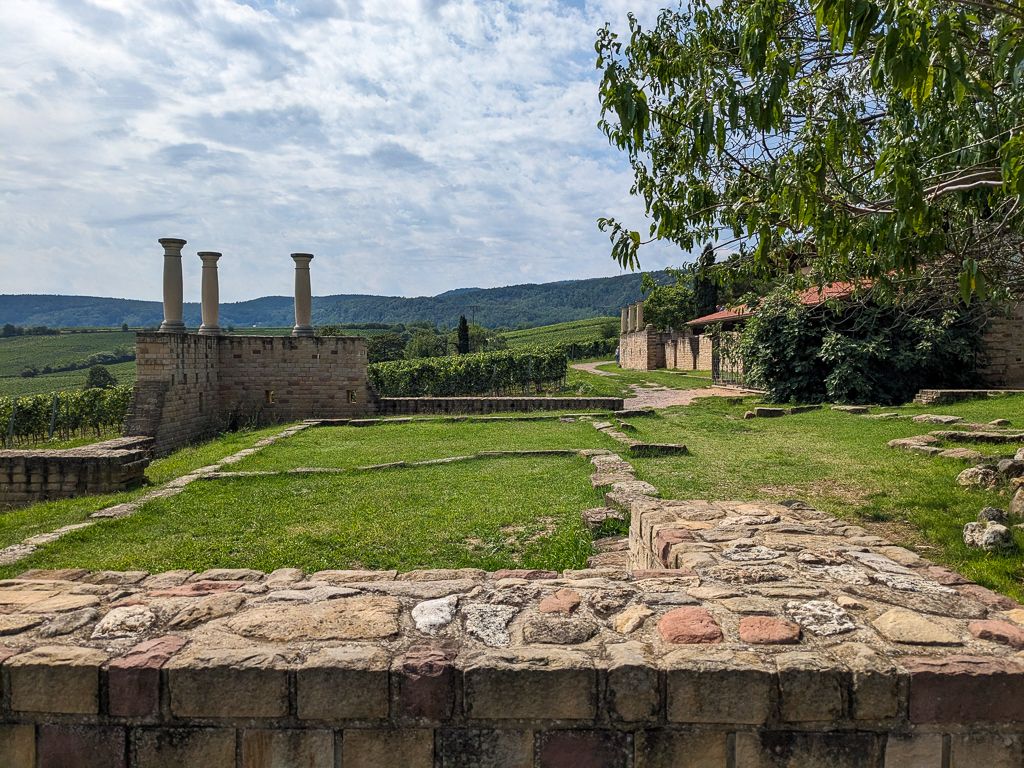
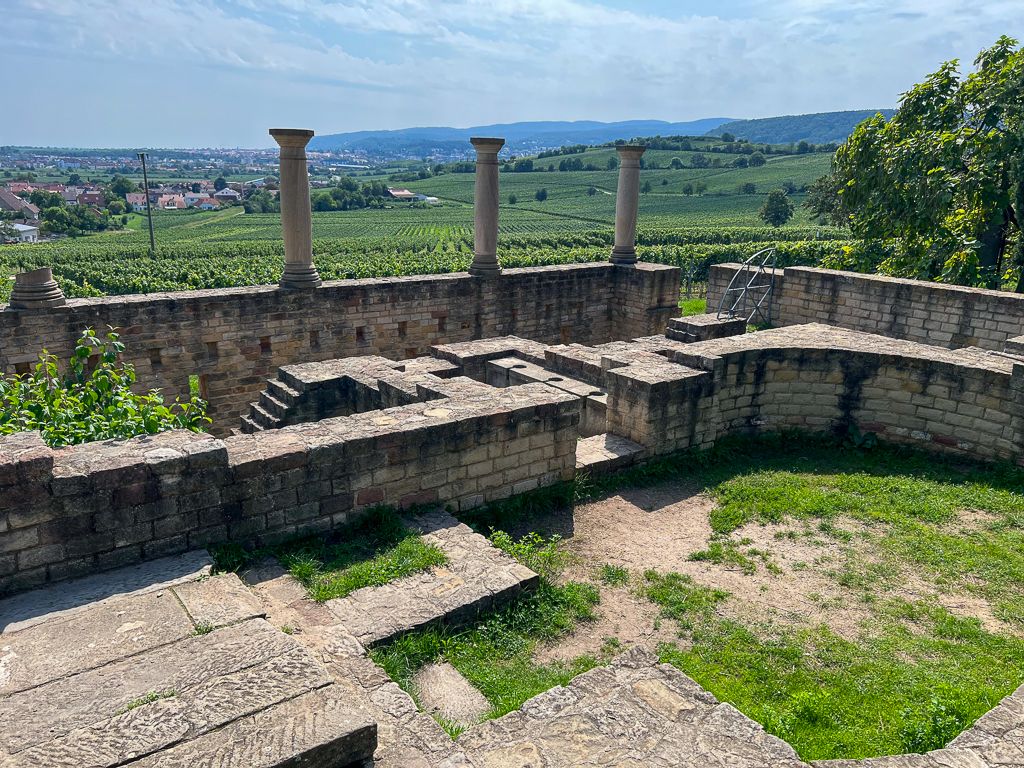
Mostly known for its aromatic and complex Riesling, which can vary from dry to sweet, the Rhine Palatinate and Saar produce a range of other grape varieties, including Pinot Noir (Spätburgunder), Pinot Blanc (Weißburgunder), and Pinot Gris (Grauburgunder). In recent years, many winemakers have adopted sustainable and environmentally friendly practices in their vineyards and winemaking processes, with many wineries including organic and biodynamic methods to preserve the health of the soil and promote biodiversity.
German roadside attractions: Big, Bigger, Wurstmarkt!
While moving through the local towns you will notice small signs of the important role wine plays here in daily life: Posters of current wine princesses, announcements of the town's Kerwe (annual local wine fest, and every single little village has one of each!), wine hikes, Morgenschoppe (morning spritzers), in addition to several wineries per town or village.
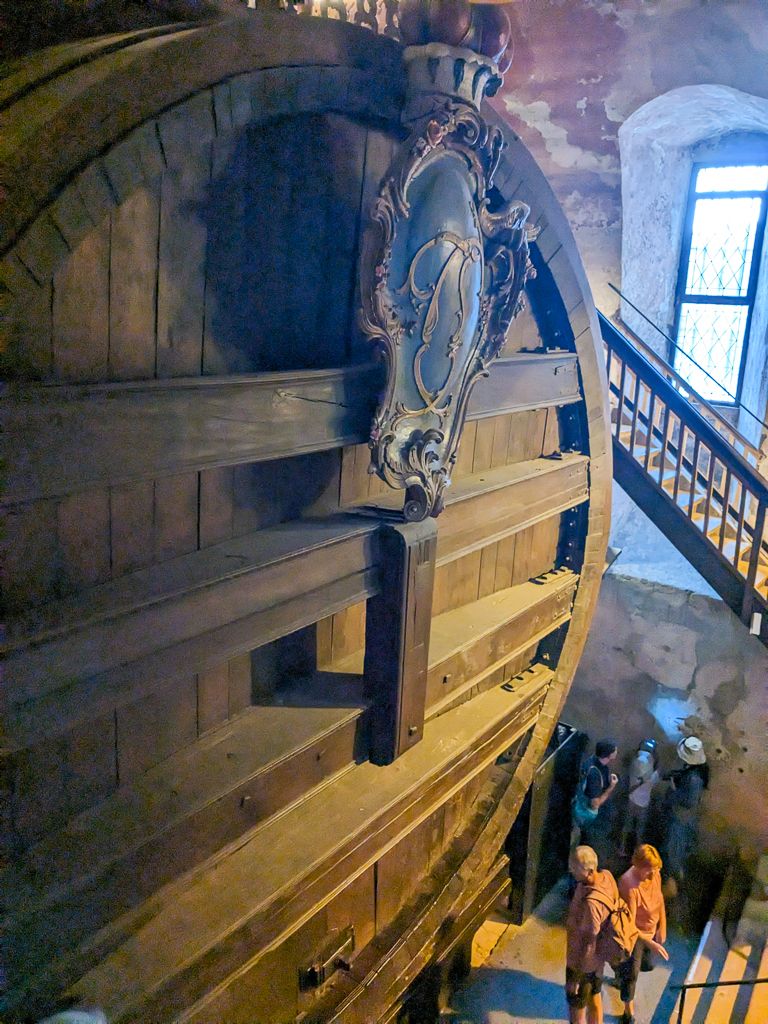
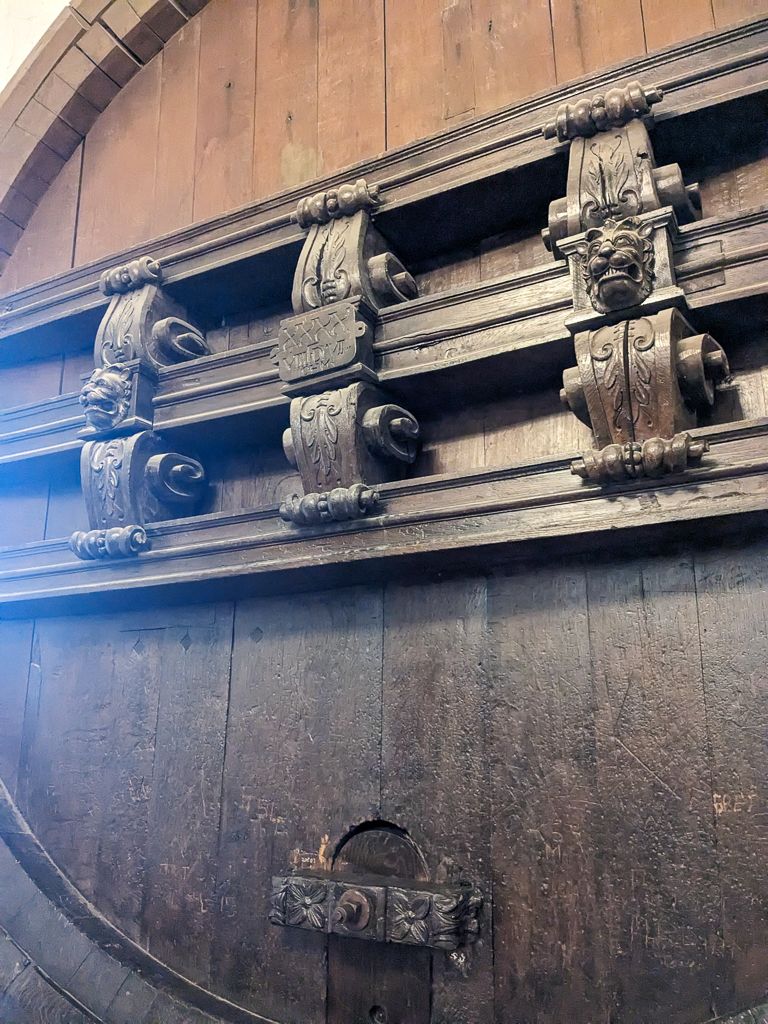
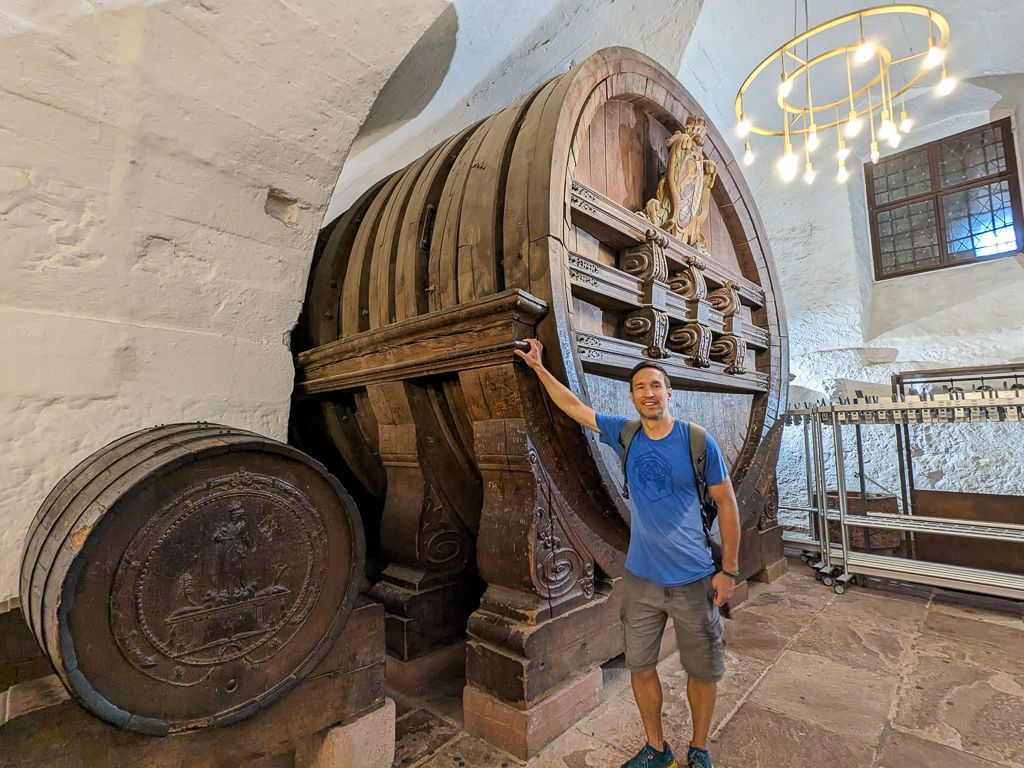
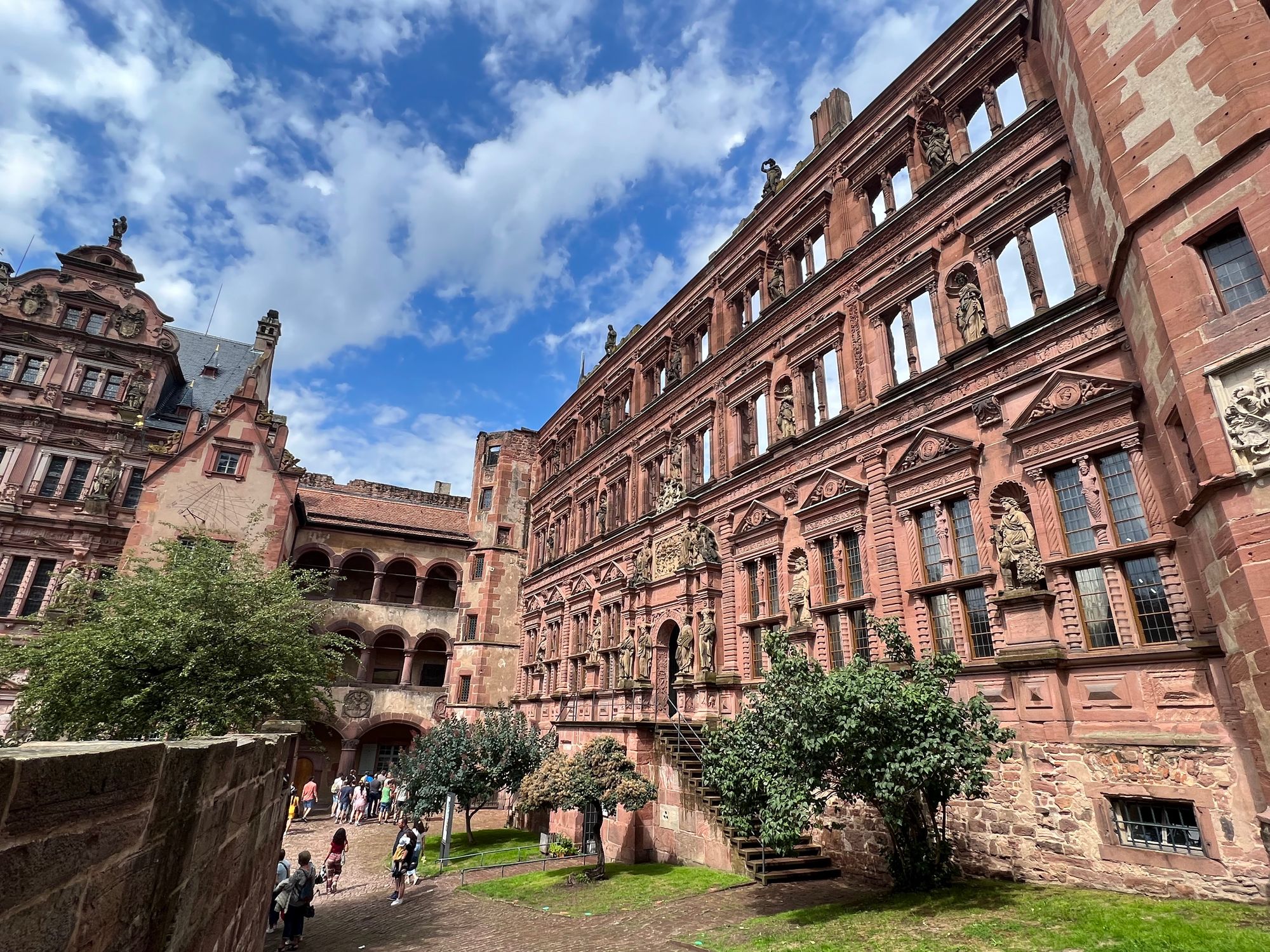
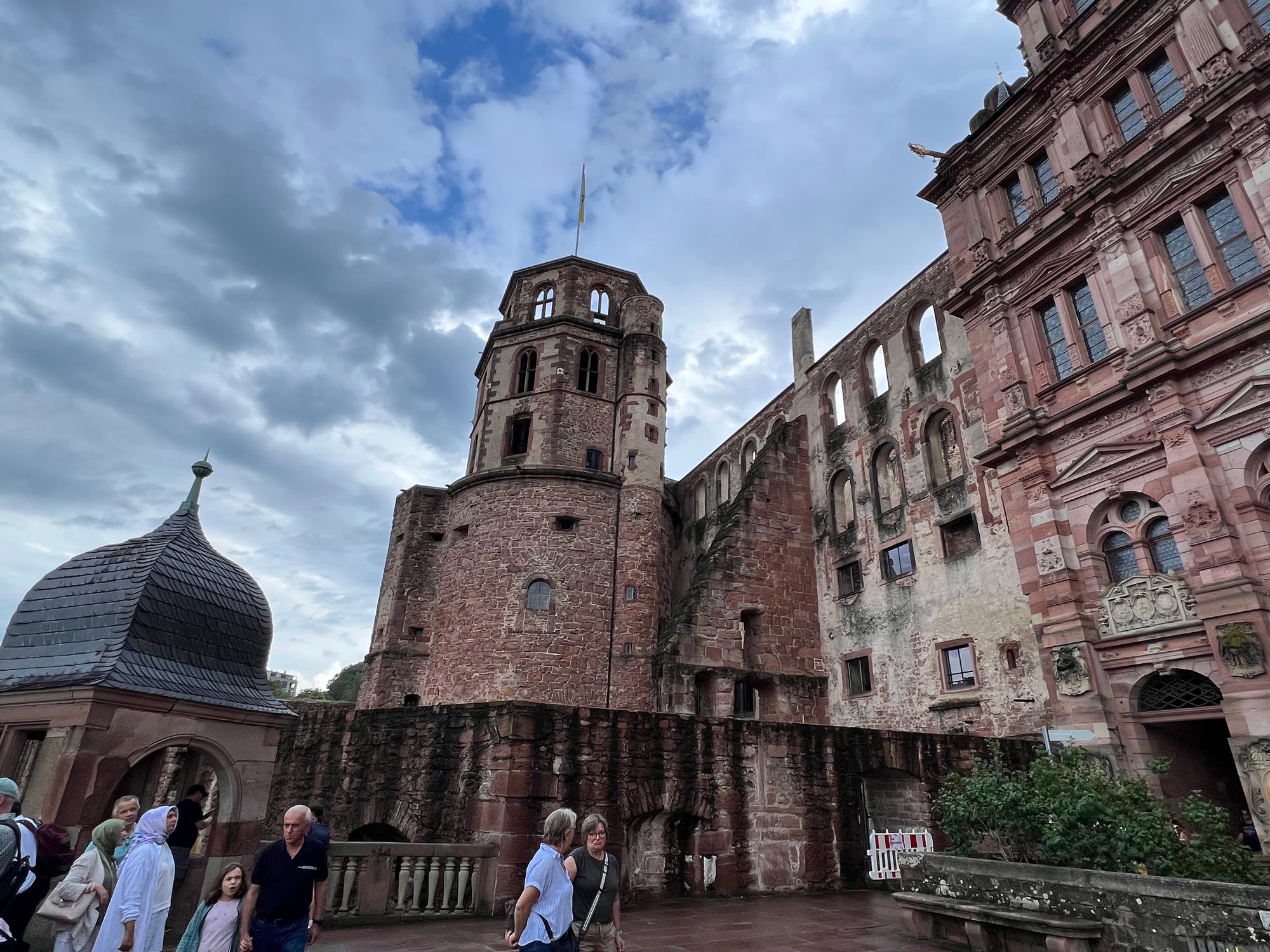
The pinnacle of all this is held by three famous attractions: The Heidelberger Tun, which is located in the cellars of the Heidelberger castle and, with a capacity of more than 58,000 gallons, claims to be the worlds largest (functional) wine barrel. Even though it was mostly built for symbolic purposes and only occasionally filled with wine, it is an impressive sight. Dating back to 1751, and artfully ornate, it is worth a visit if you ever find yourself in the beautifully romantic city of Heidelberg.
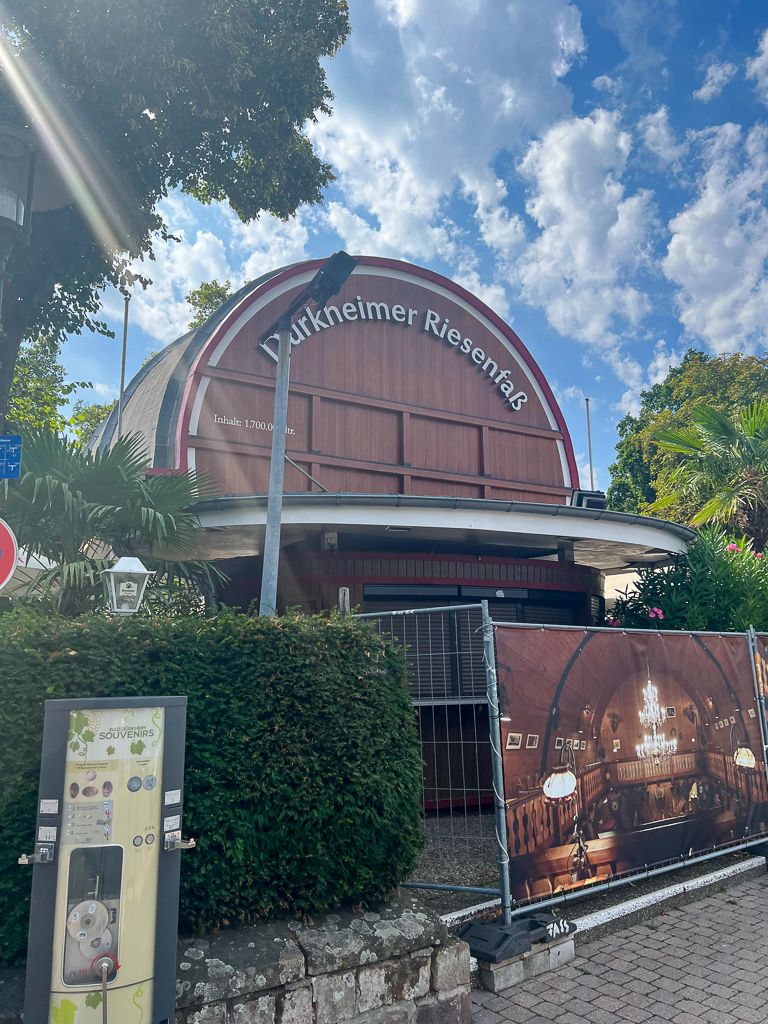
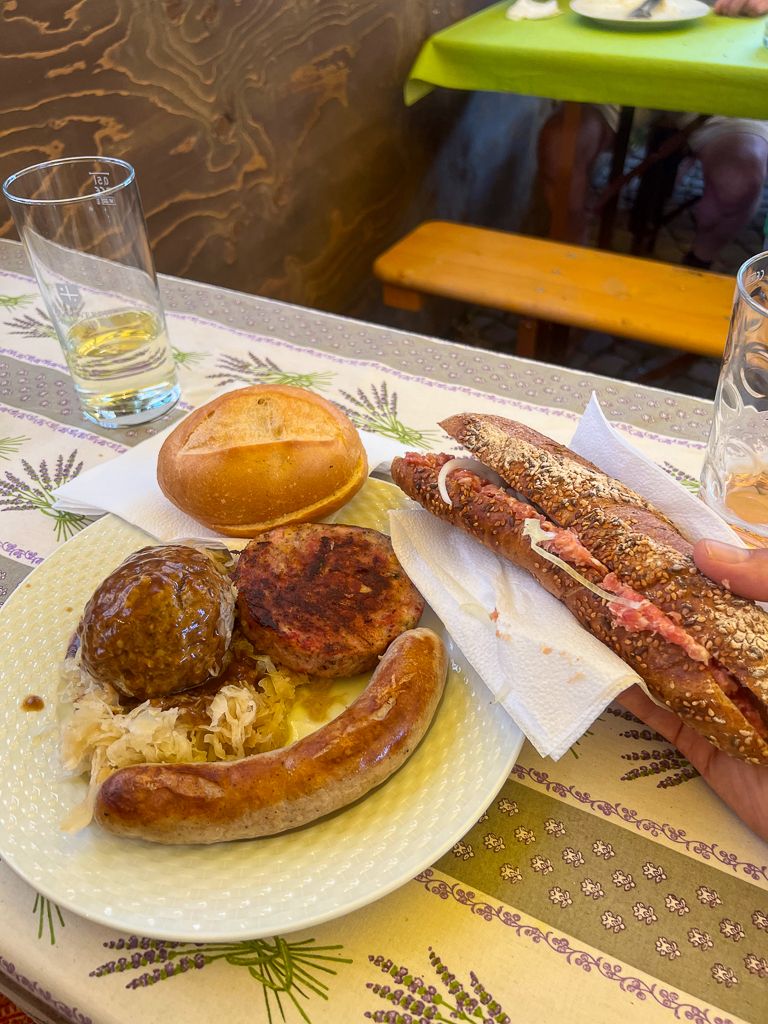
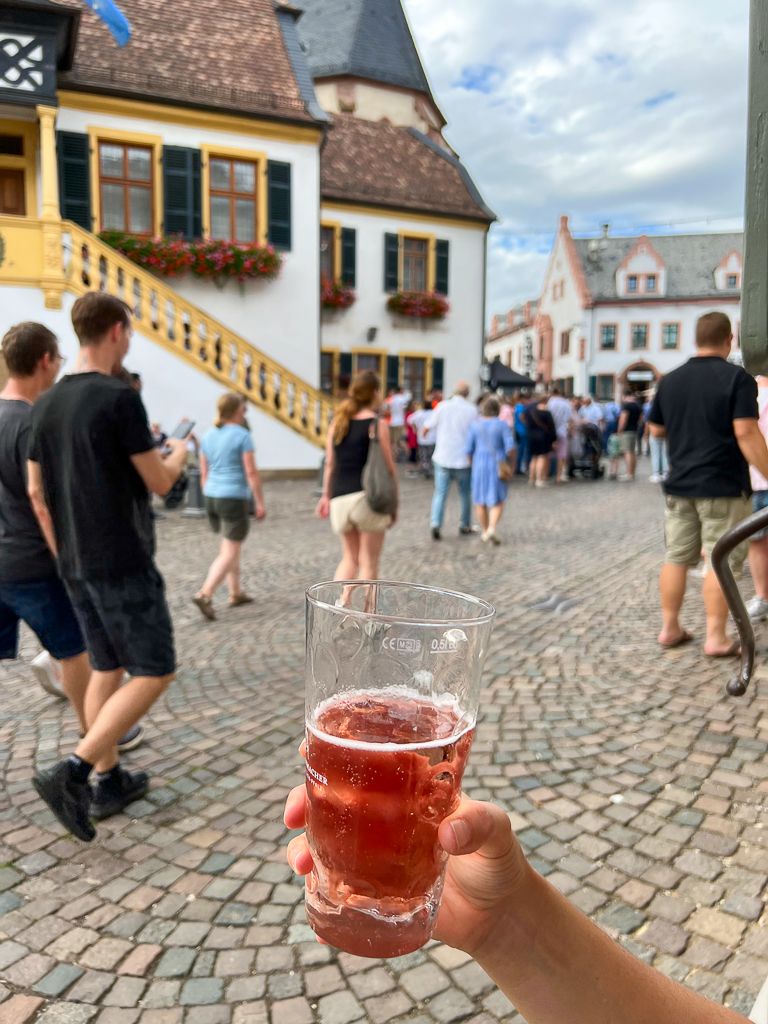
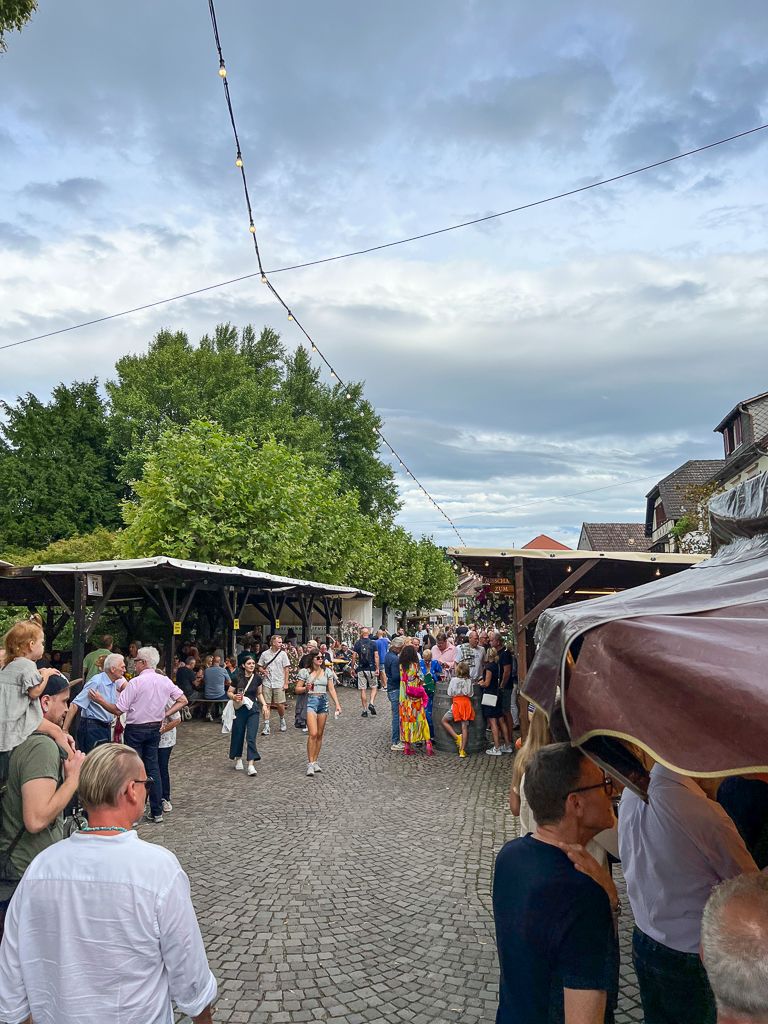
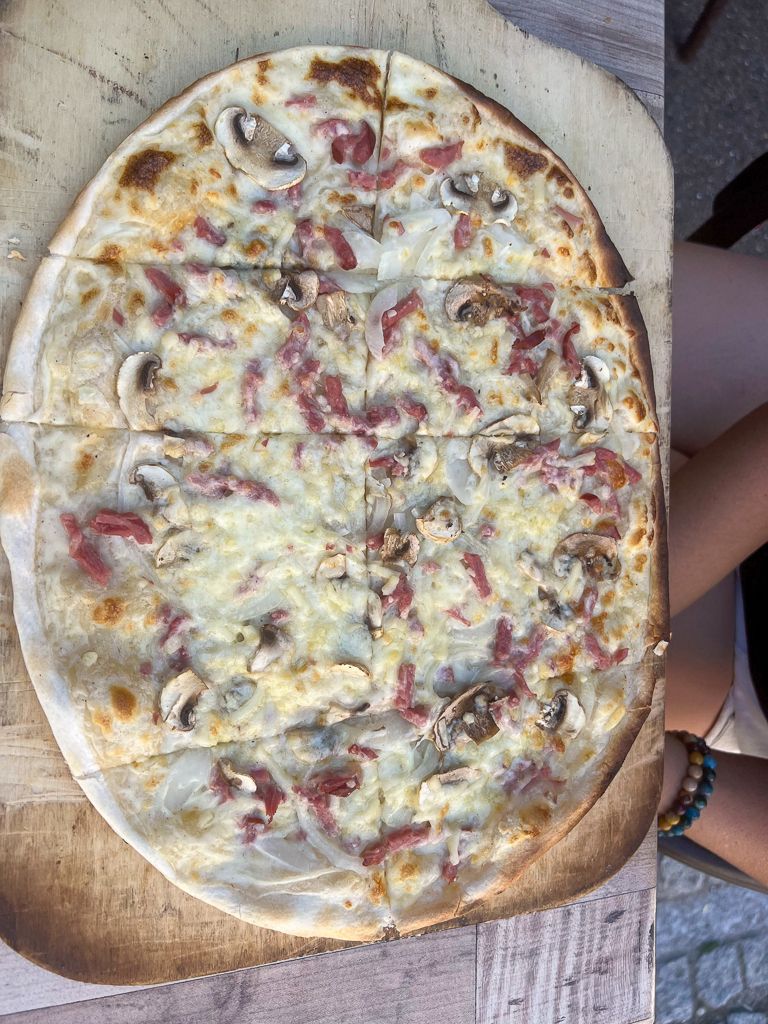
The second attraction that claims the title of largest wine barrel in the world is located in Bad Dürkheim, right next to the parking lot that transforms into a Oktoberfest like spectacle during the first two weeks of September. Constructed in the late 20th century, the Bad Dürkheimer Fass would hold a ridiculous amount of 1.7 million liters, or 450,000 gallons, if it was ever filled.
The annual spectacle known as the Bad Dürkheimer Wurstmarkt ('sausage market', no pun intended) dates back to the 15th century, making it the oldest wine fest in Germany and with up to 700,000 visitors, one of the largest wine festivals in the world.
Good luck trying all 300 different sparkling and non sparkling wines, especially if you start with a generously poured half liter Schorle (spritzer) served in a local curiosity known as Dubbeglas. People from all over come here to eat local specialties like Saumagen, Leberknödel, or Flammkuchen, drink, ride the ferris wheel and other amusement rides, and watch the annual fireworks.
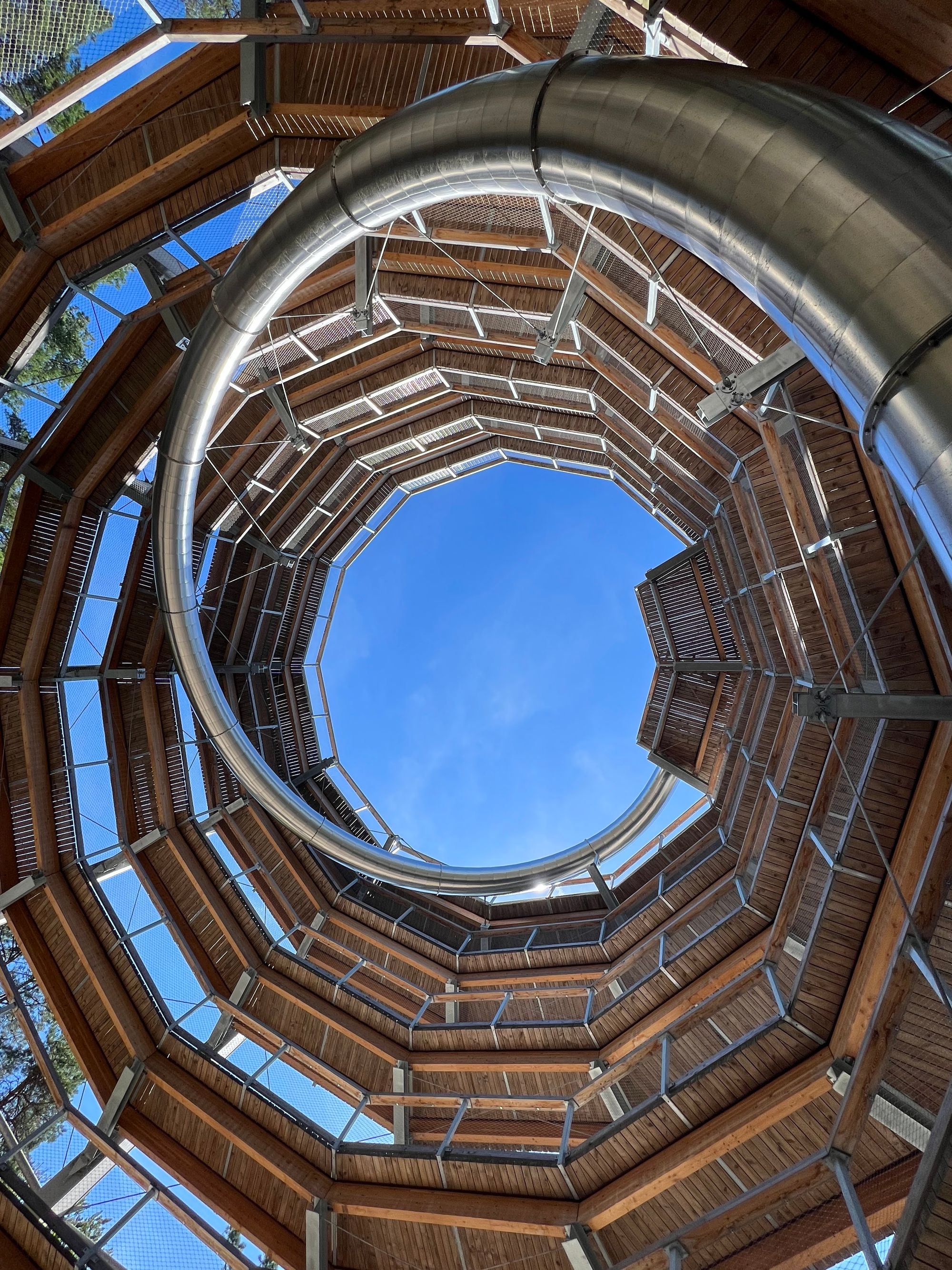
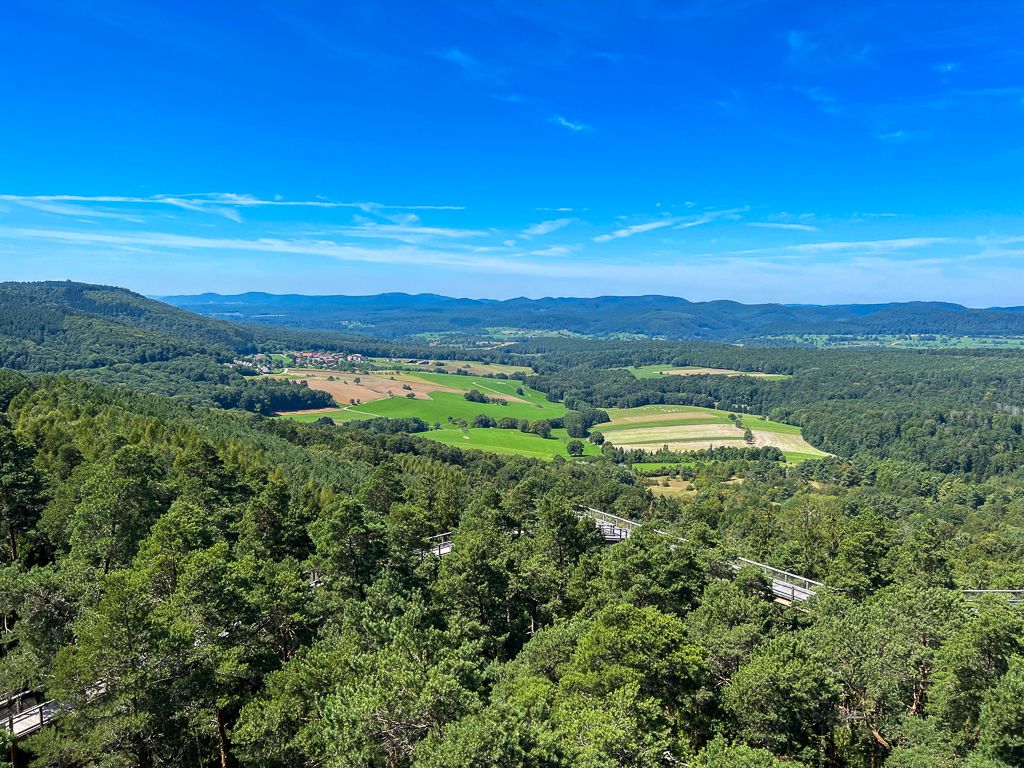
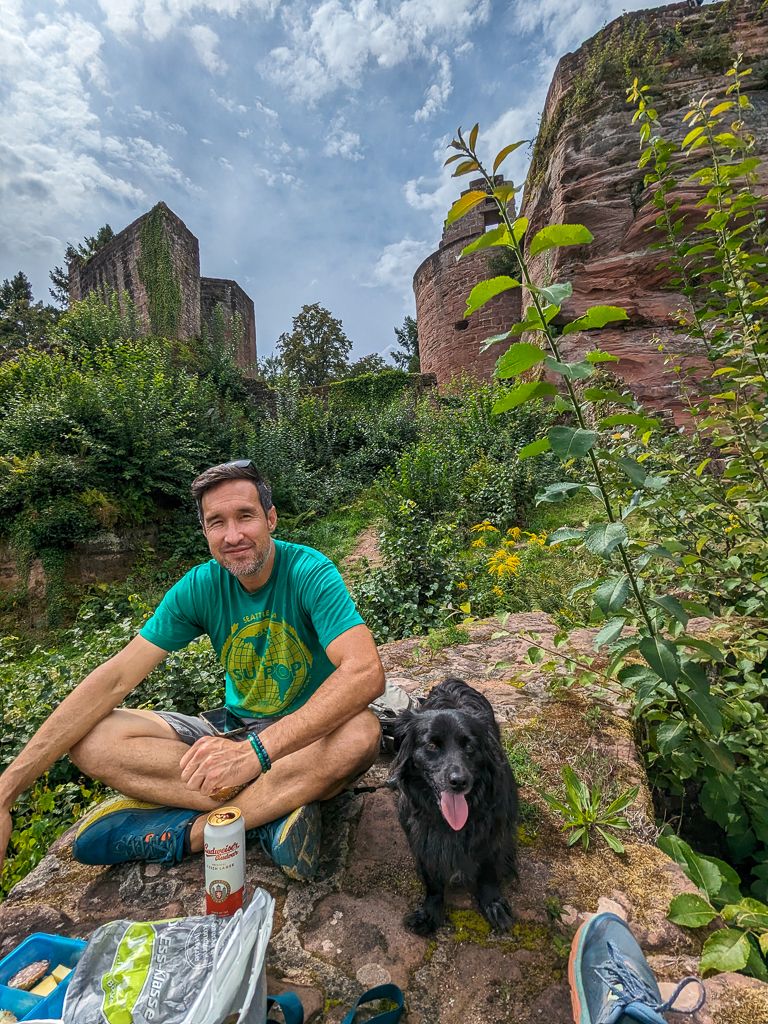
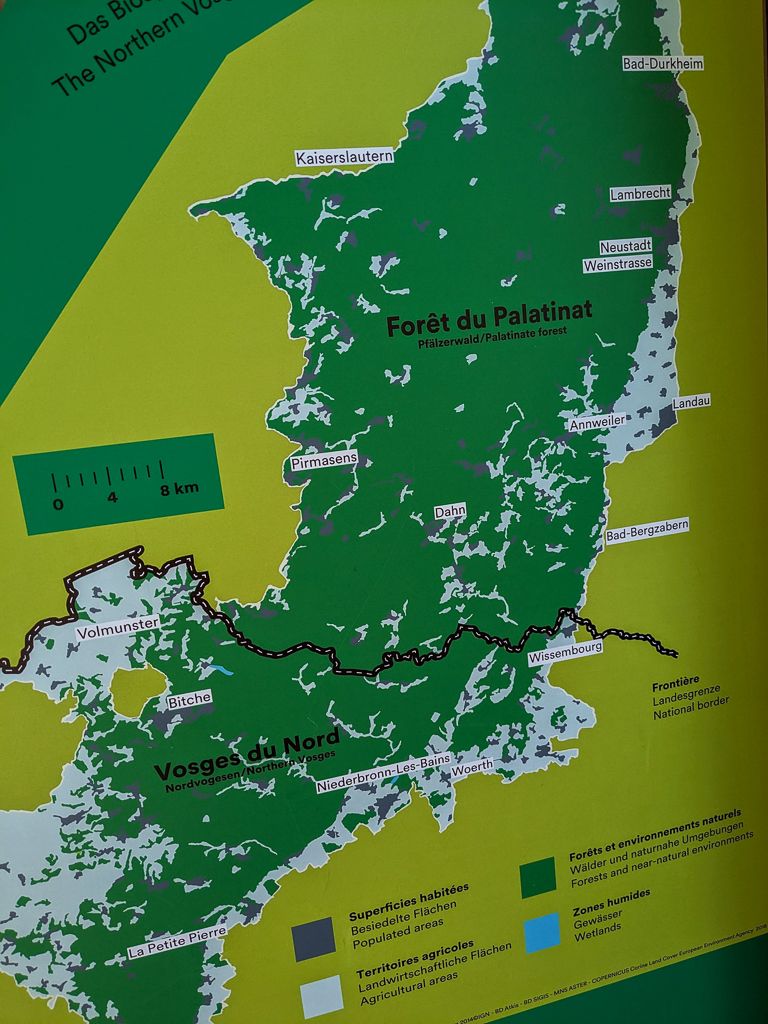
Folklore, myths and legends of the Rhine Palatinate:
The second thing you might notice if you choose to take the scenic route in the southwestern parts of Germany is that if you are not passing through endless fields of grapevine, you are probably driving through large, thick forests. Thanks to the Brothers Grimm, the Black Forest has become world famous for its dark folklore.
The woods of the Palatinate Forest might not be as famous, but they hold just as many secrets and legends. More than 500 fortresses and castles are scattered throughout the 180.000 Hektar (roughly 444.700 acres) of biosphere reserve, a true hikers (and bikers) paradise.
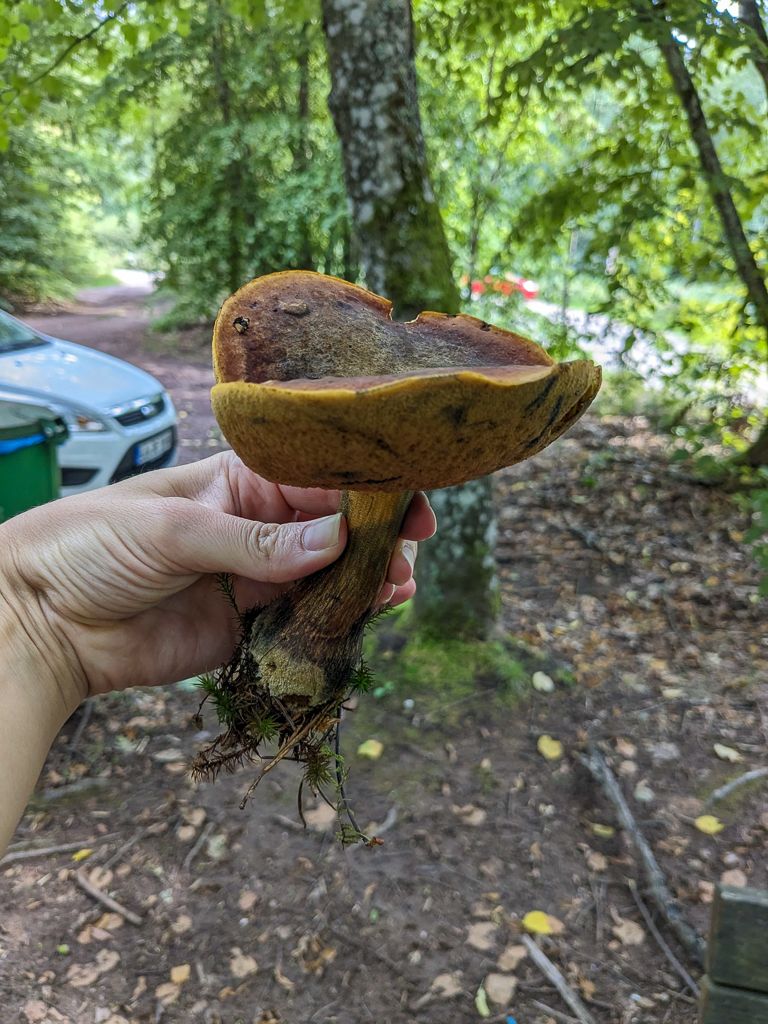
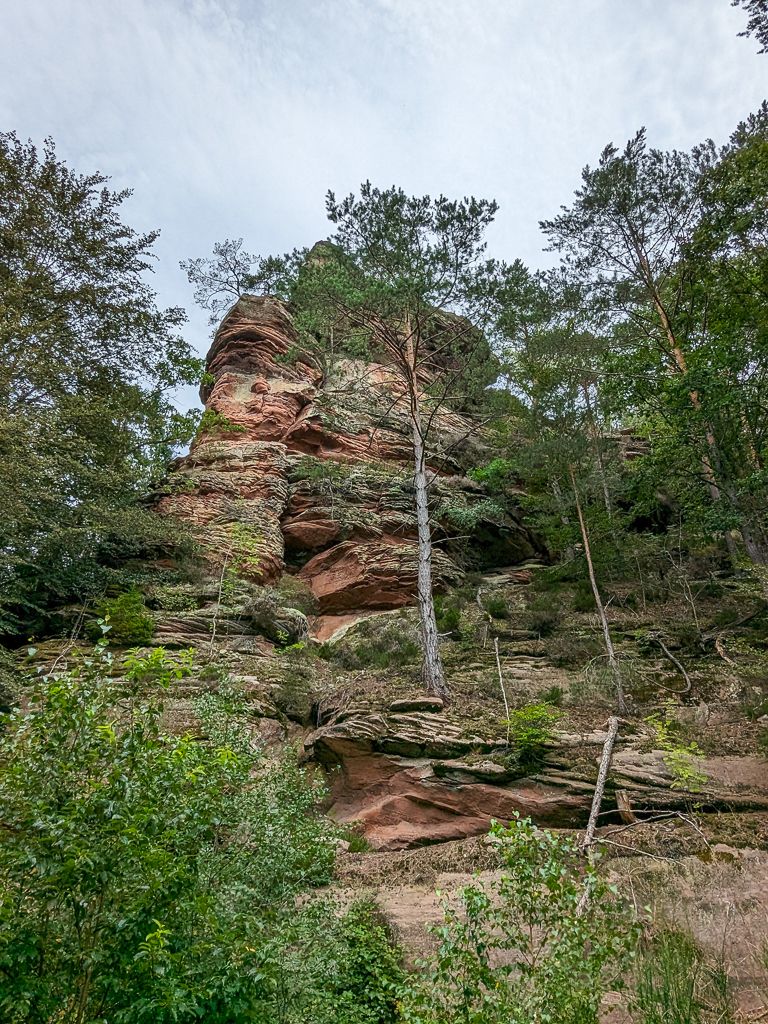
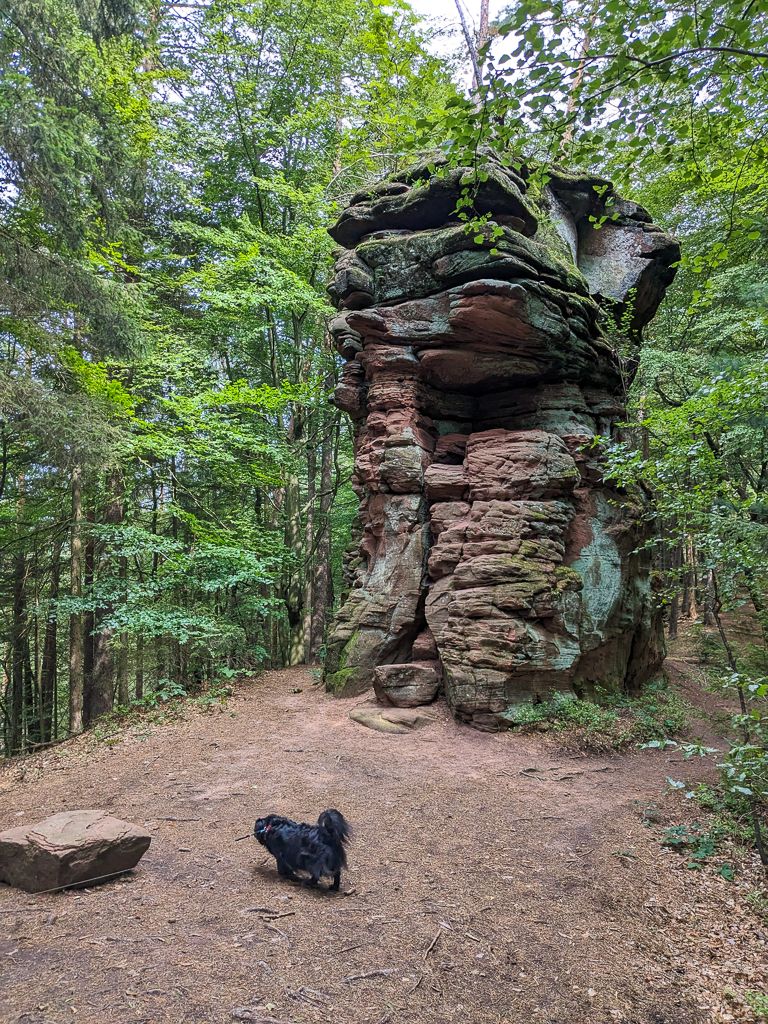
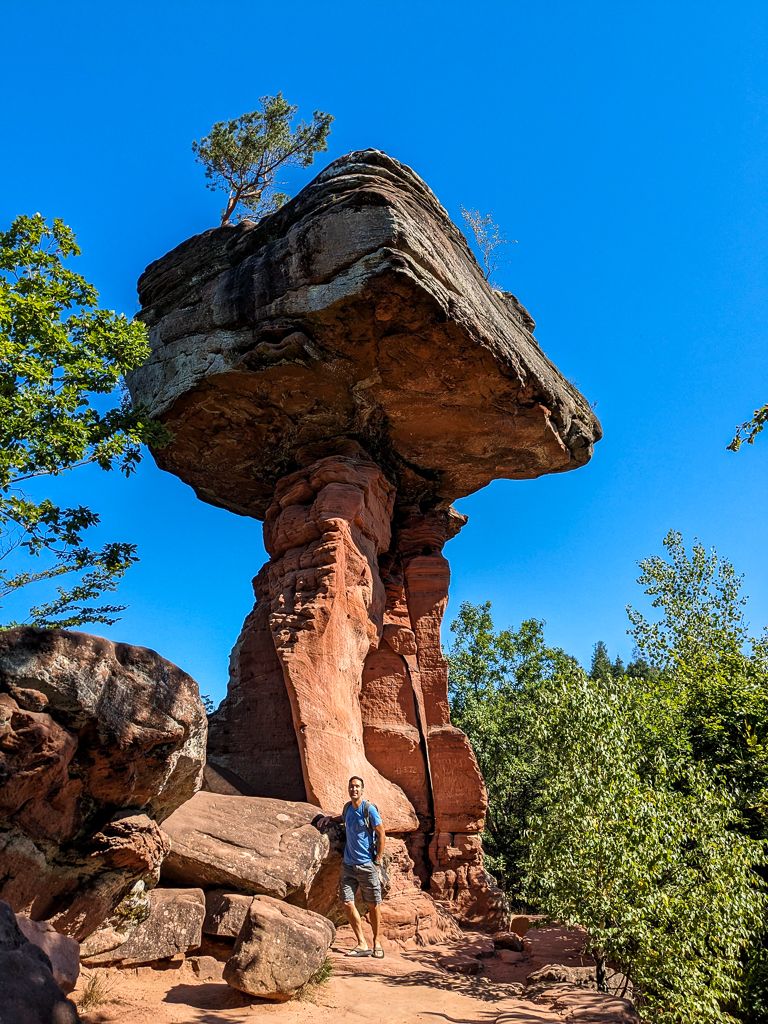
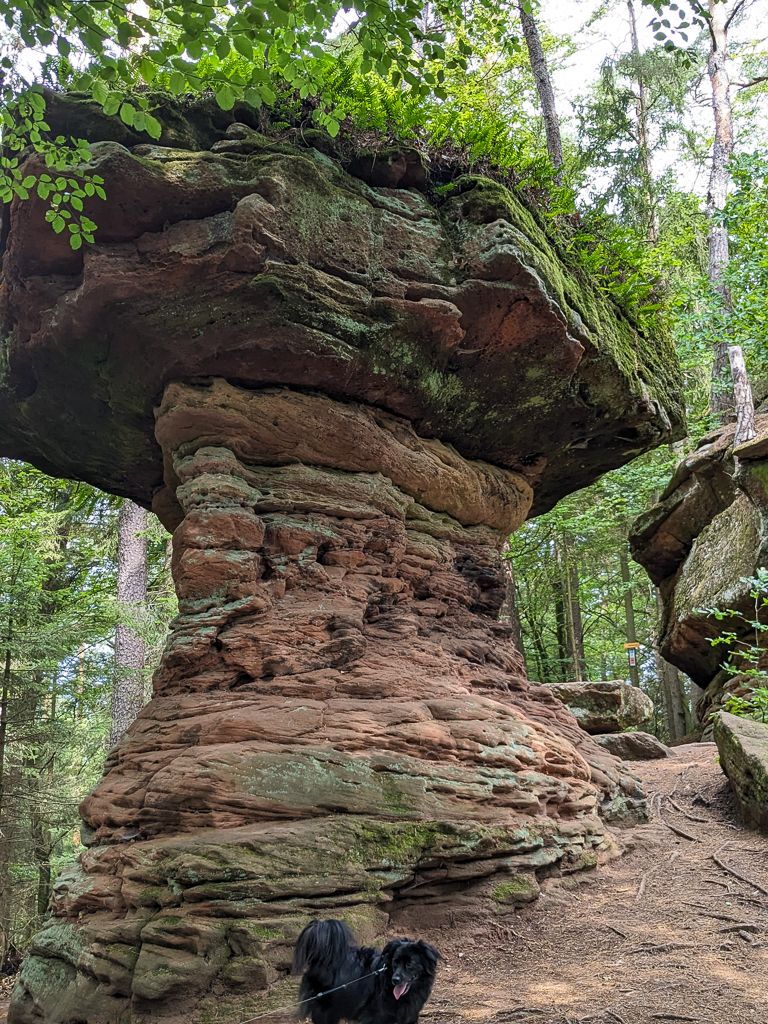
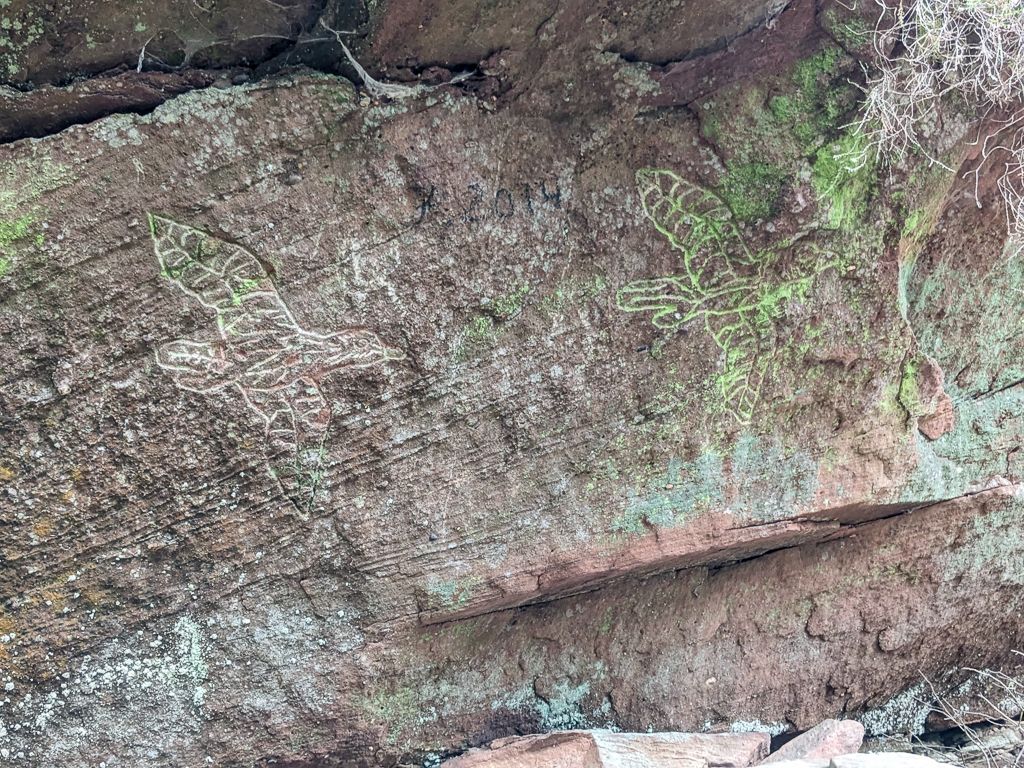
Many places within these woods hold mysterious names, like the famous Devil's Table near Dahn, that inspired a well known German poem. In fact, there are several of these rock formations with a similar name, and legend has it that the devil himself was wandering in the woods at night and, feeling hungry, looking for a place to sit and rest but couldn't find anything that suited him, he grabbed three large rocks and made himself a makeshift table. He had obviously never heard of the slogan 'leave nothing but footprints' and simply left the table for the villagers to wonder about. Not too far from here you can also find rock formations with the names of witch's mushroom (Hexenpilz) and Satan's boulder (Satansbrocken).
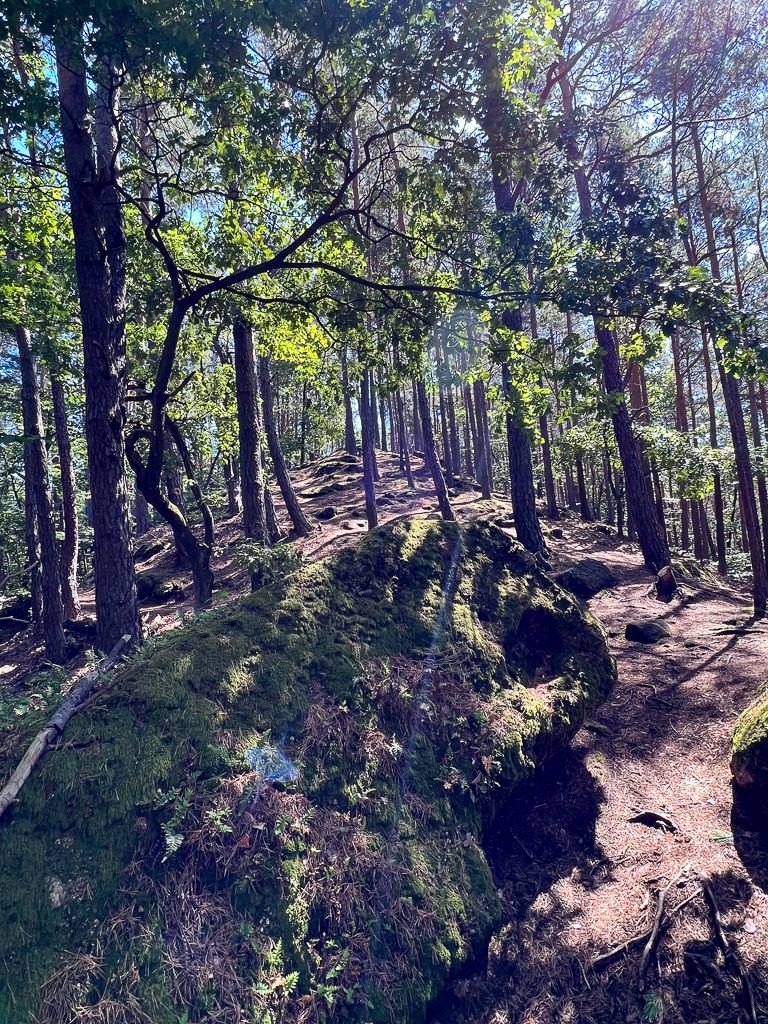
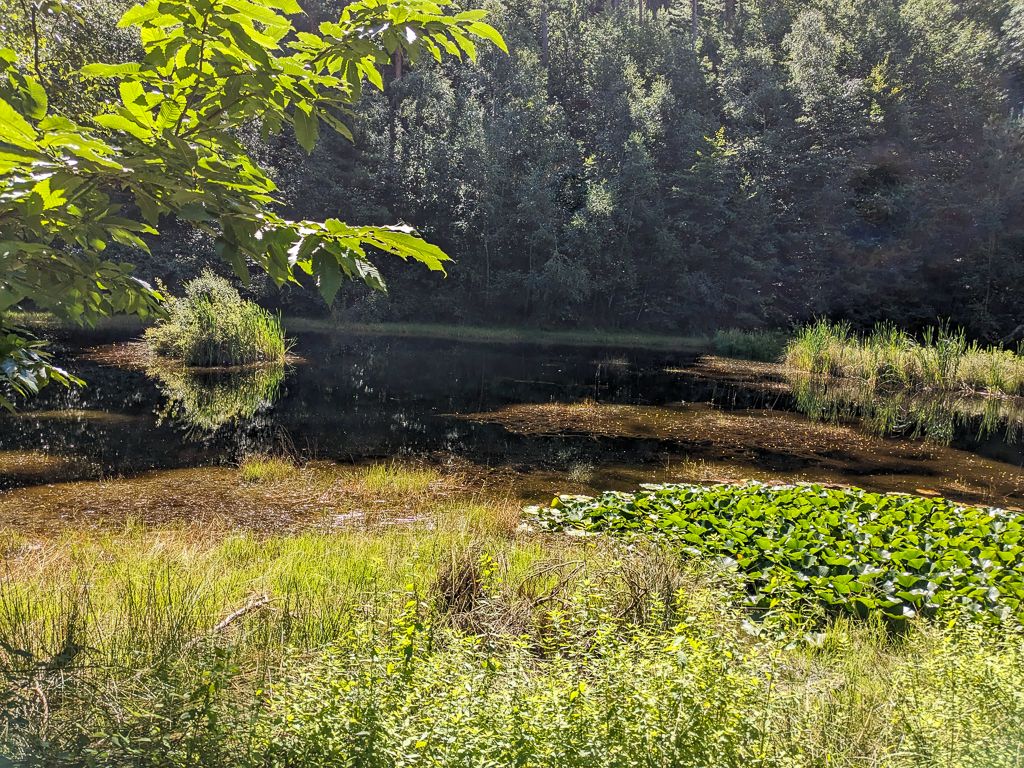
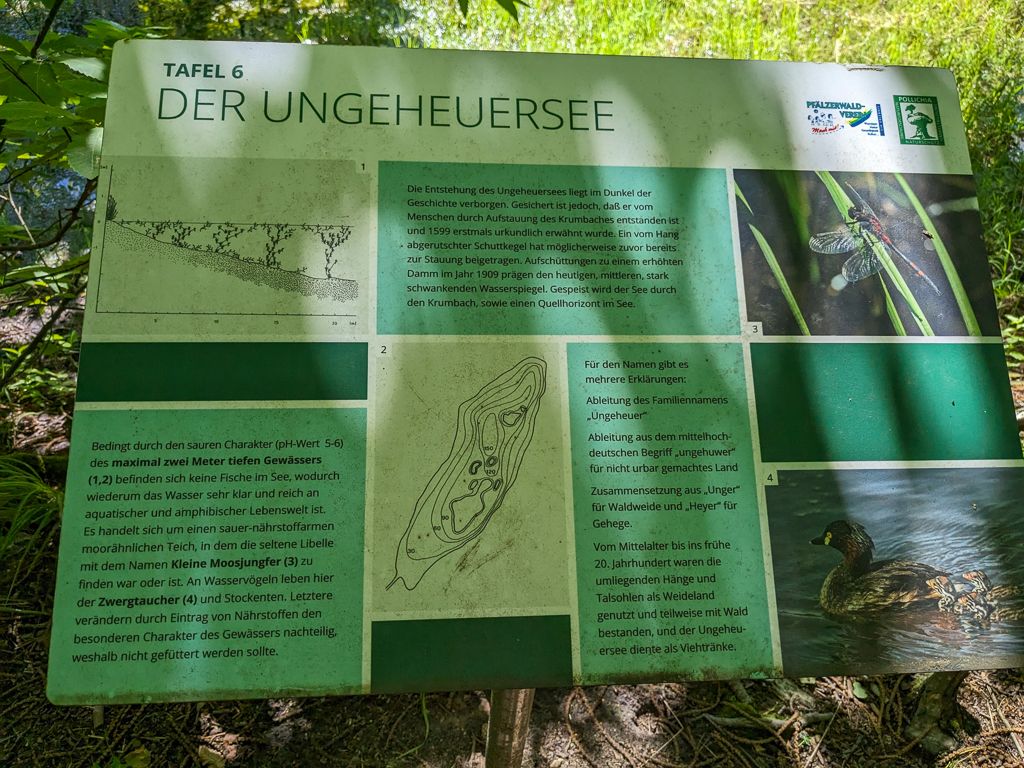
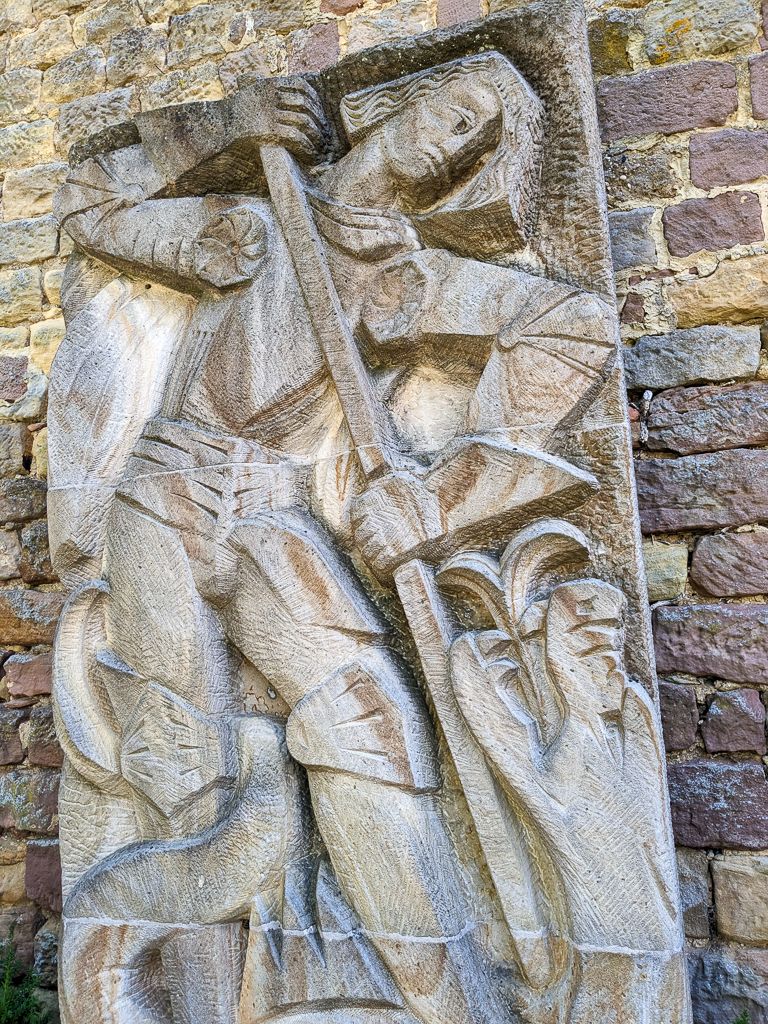
There are many local legends that surround these woods, like the Elwetritsch of Neustadt, birdlike creatures that haunt the woods at night. Neustadt even has a whole festival dedicated to these wood fairies. Or the Ungeheuersee (monstrous lake, please pardon our translation), a marshy pond where forest creatures were said to gather at night, and even a ghostly white women who was known for stealing a child or two was said to have lived here. During the day, we could only see a little snake monster slithering through the waters, but who knows what comes crawling out at night?!
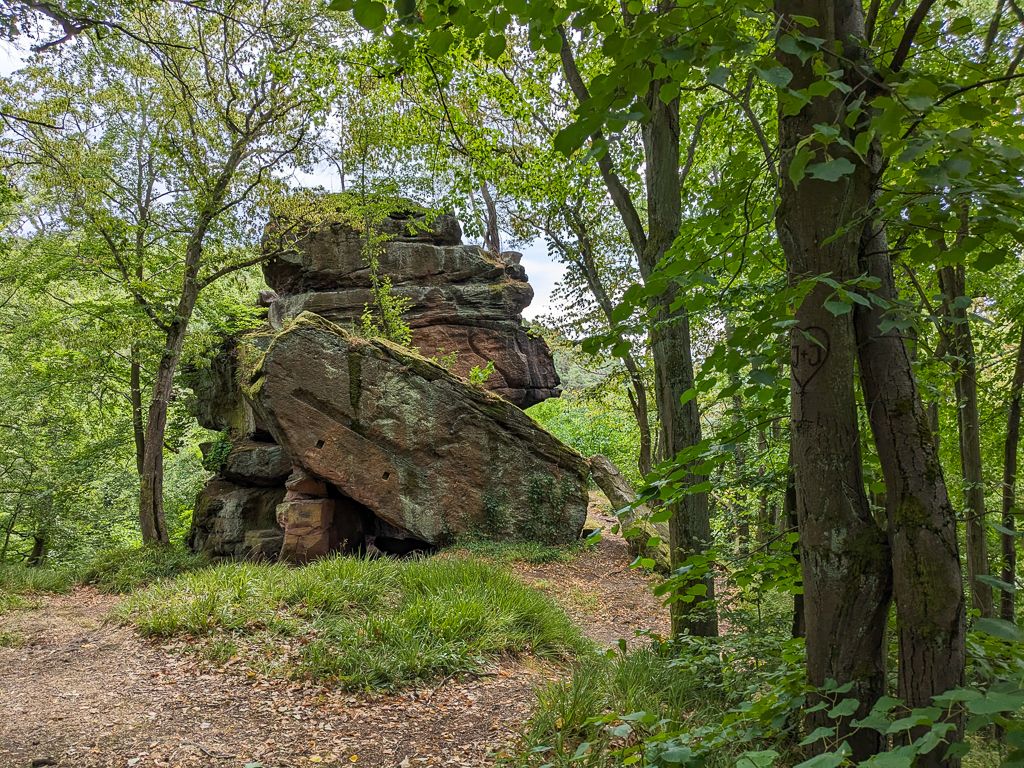
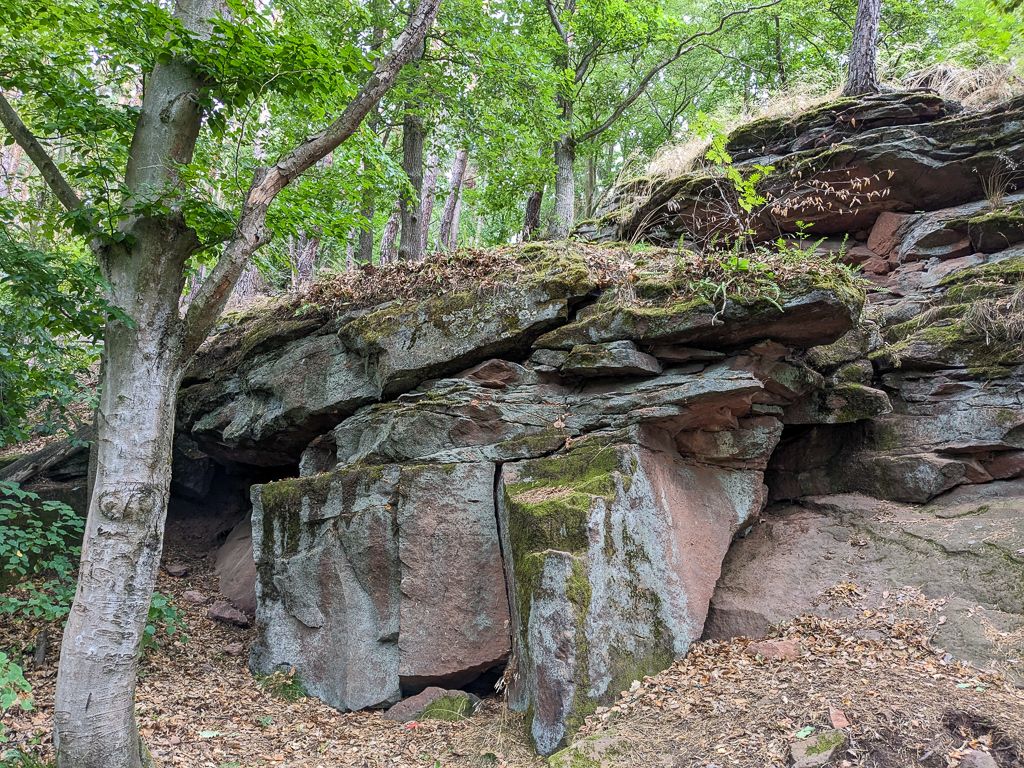
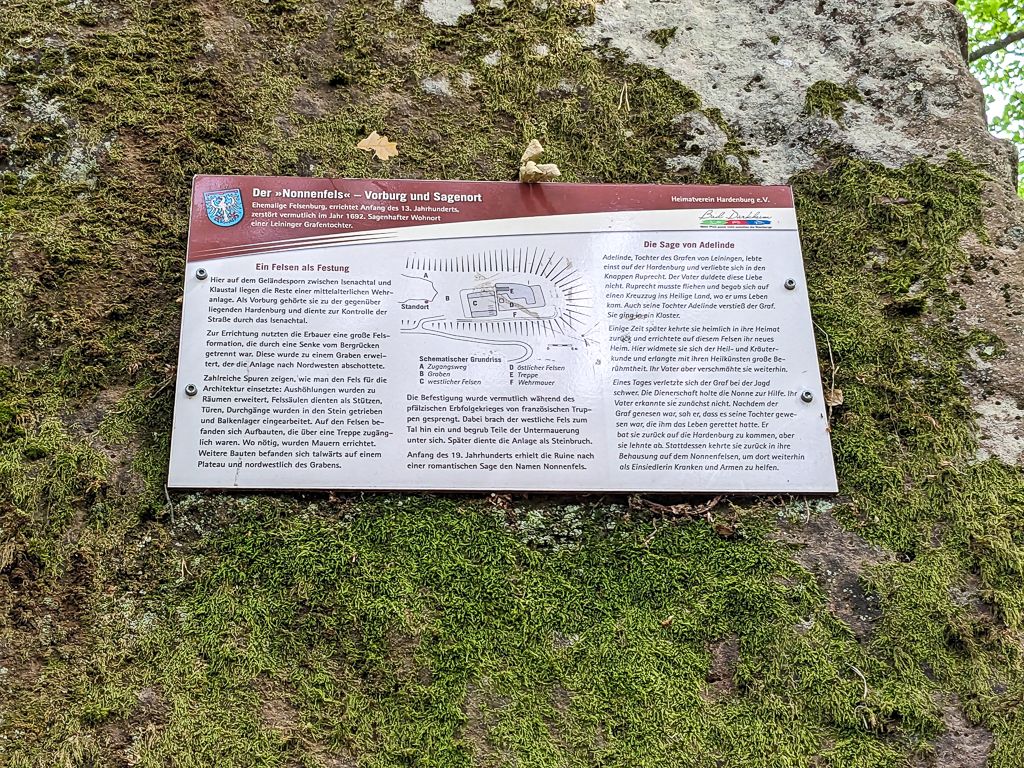
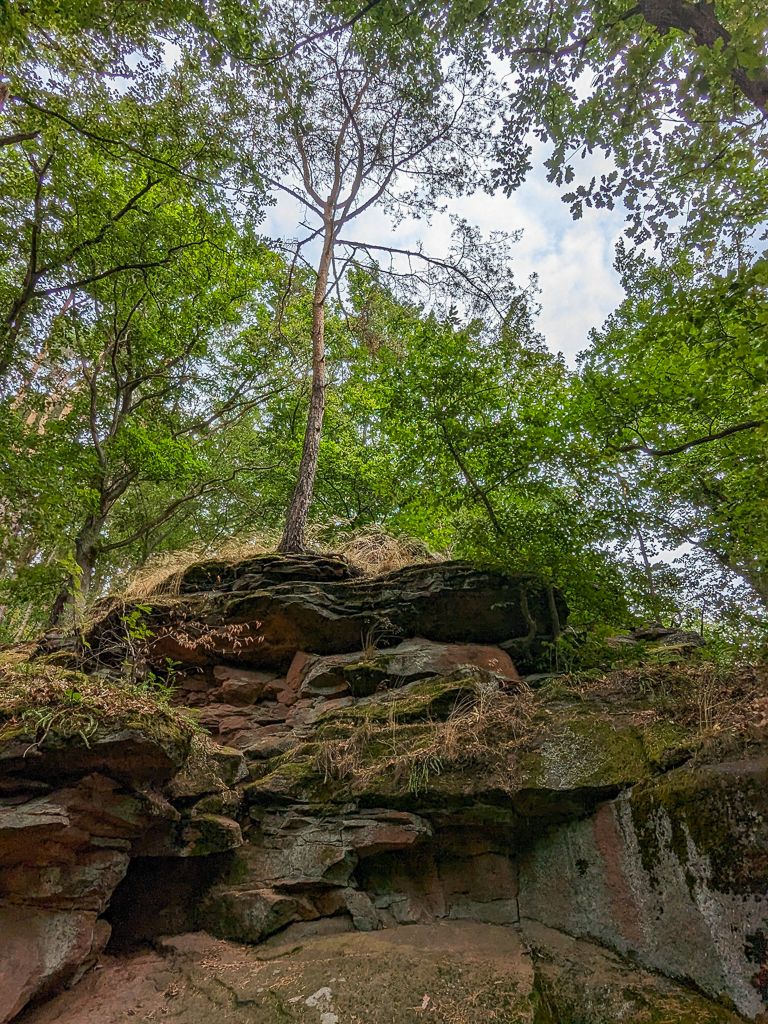
Each fortress holds its own stories and mysteries, some of them go as far back as the 10th century. And because Germans are known to be hopeless romantics, many places tell a tale of forbidden love. You might have heard at some point of the famous tale of the Lorelei, who's heartbroken siren song led sailors to steer their ships into the cliffs along the Rhein. But the Hardenburg has its own tale of heartbreak and forbidden love. The fortress was built by the Count of Leinigen, whose lovely daughter Adelinde fell in love with a page. Her father did not approve of the relationship and the page was sent to join the crusade to the Holy Land, where he died. Adelinde was heartbroken and left to join a convent to pray and take care of the sick. She learned herbalism and moved into a shelter built into the rocks, what was to become known as the nun's rock (Nonnenfels), not very far from her father's castle. One day her father was badly hurt during a hunt and the servants called on the herbalist nun who lived in the rocks for help. She saved her fathers life, but he did not recognize her. Once he recovered he paid her a visit to thank her, and finally recognized his daughter, who had been living in sight of his castle this whole time.
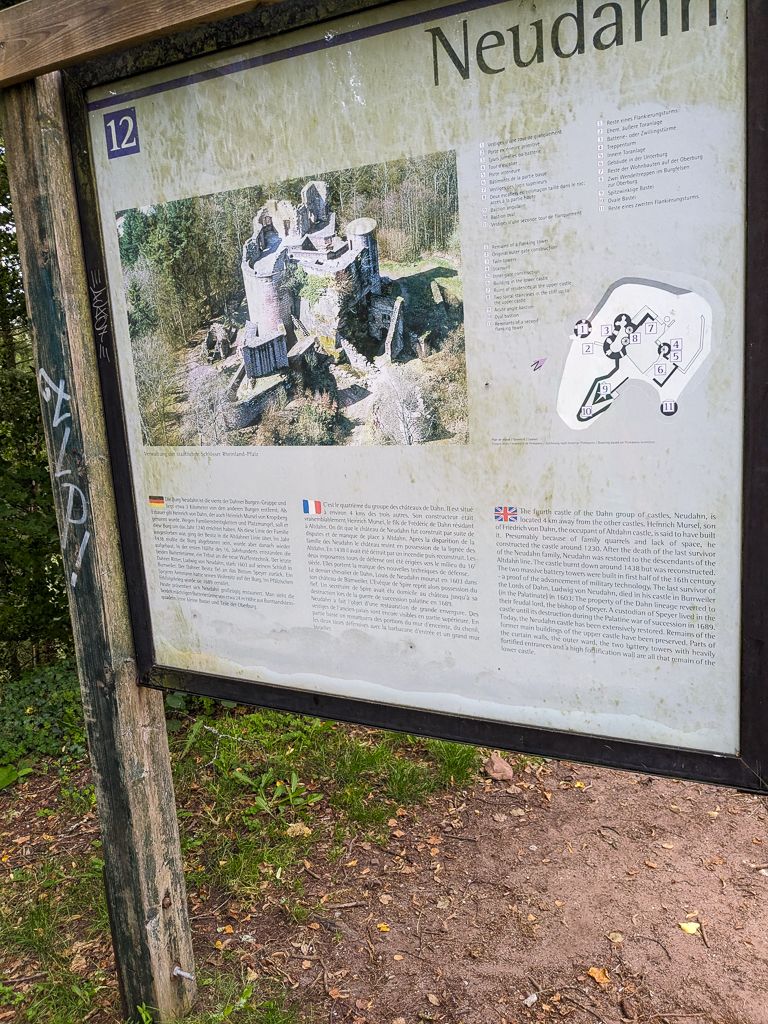
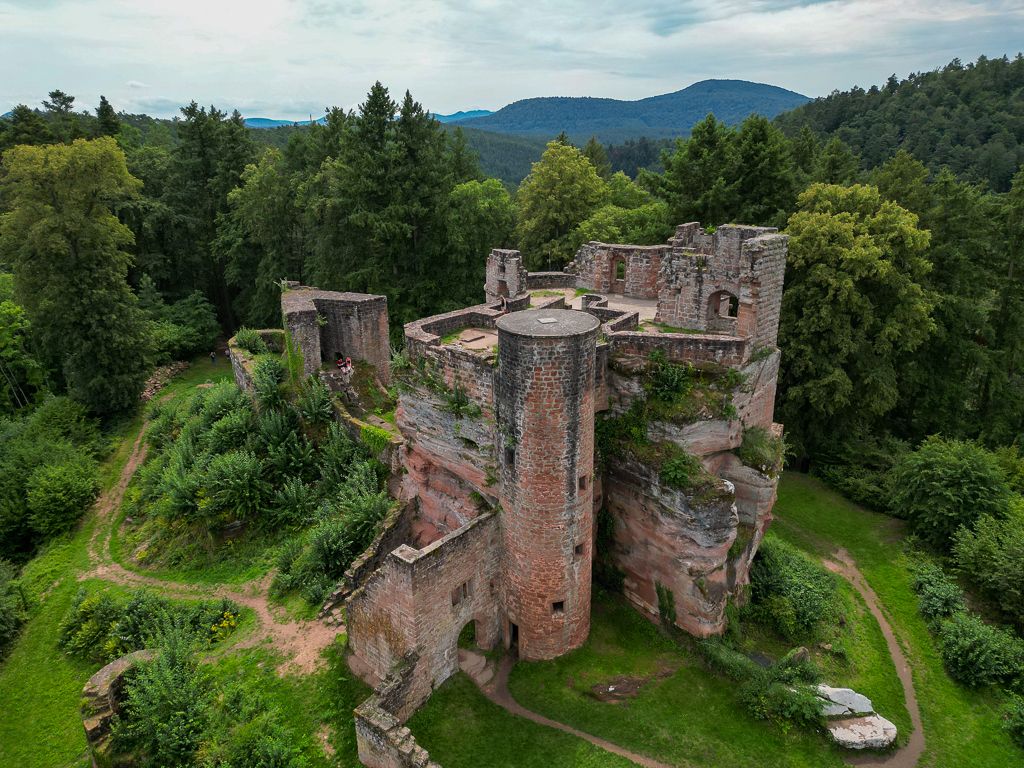
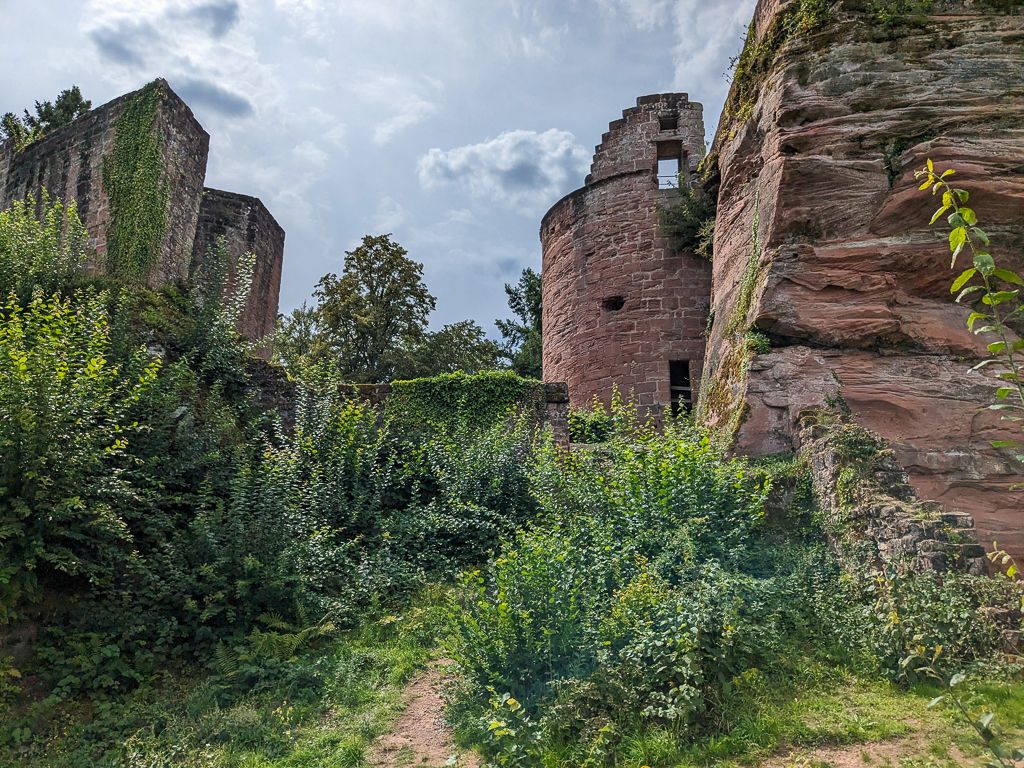
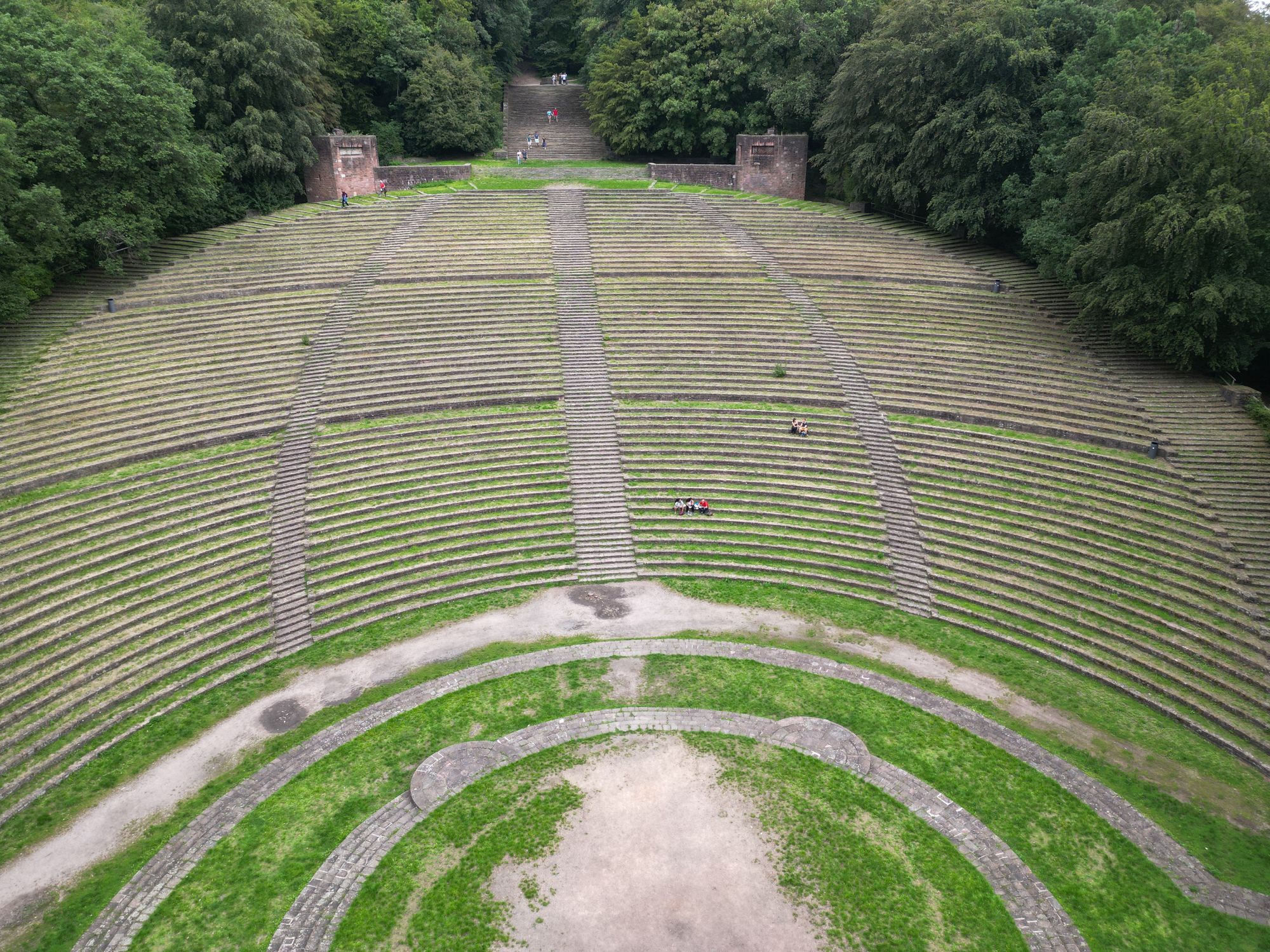
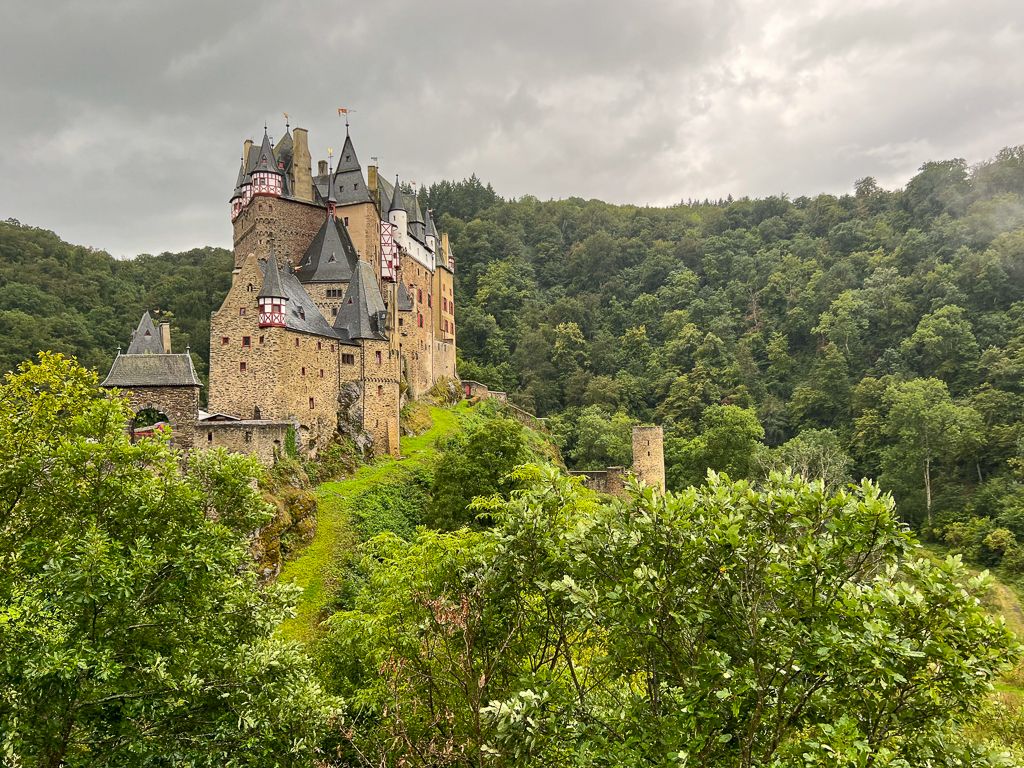
There are countless myths and legends that surround these woods and castles and we loved exploring all the different kinds of ruins: Frankenstein, which might, or might not have been an inspiration for Mary Shelley's infamous tale, the fortress of Neu-Dahn, which at some point belonged to a robber knight named Stophes, and legend has it, that you can still hear voices and moans rising from the dungeon at night, or Elz and Trifels castle, with their impressive collection of jewels and weapons.
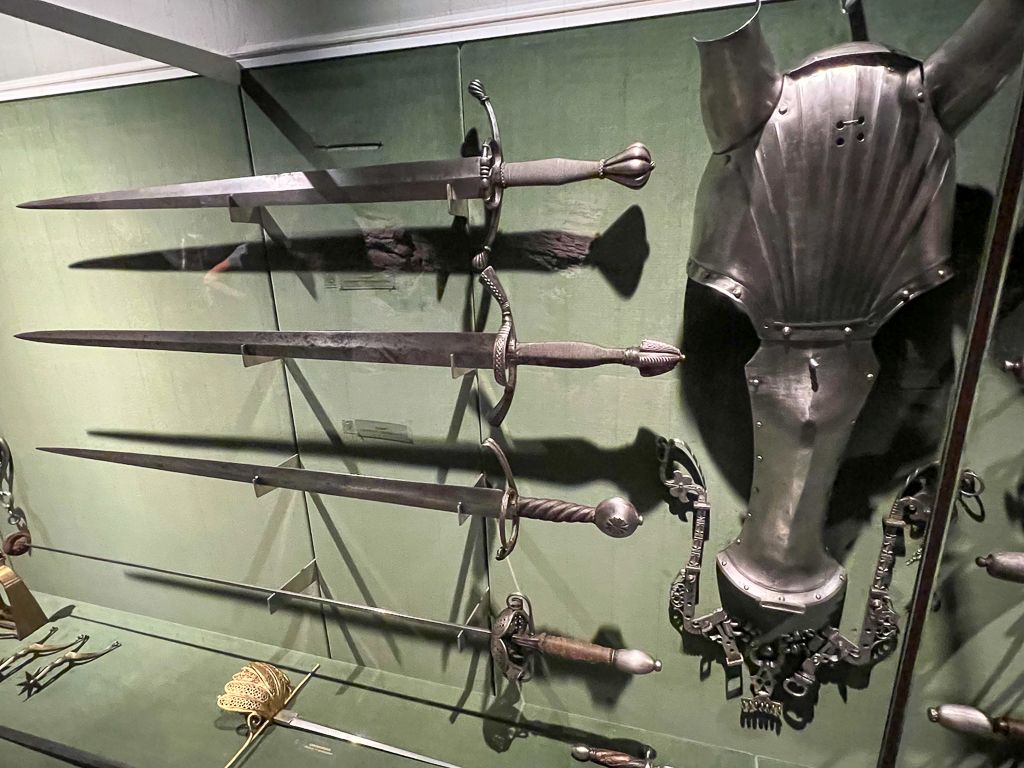
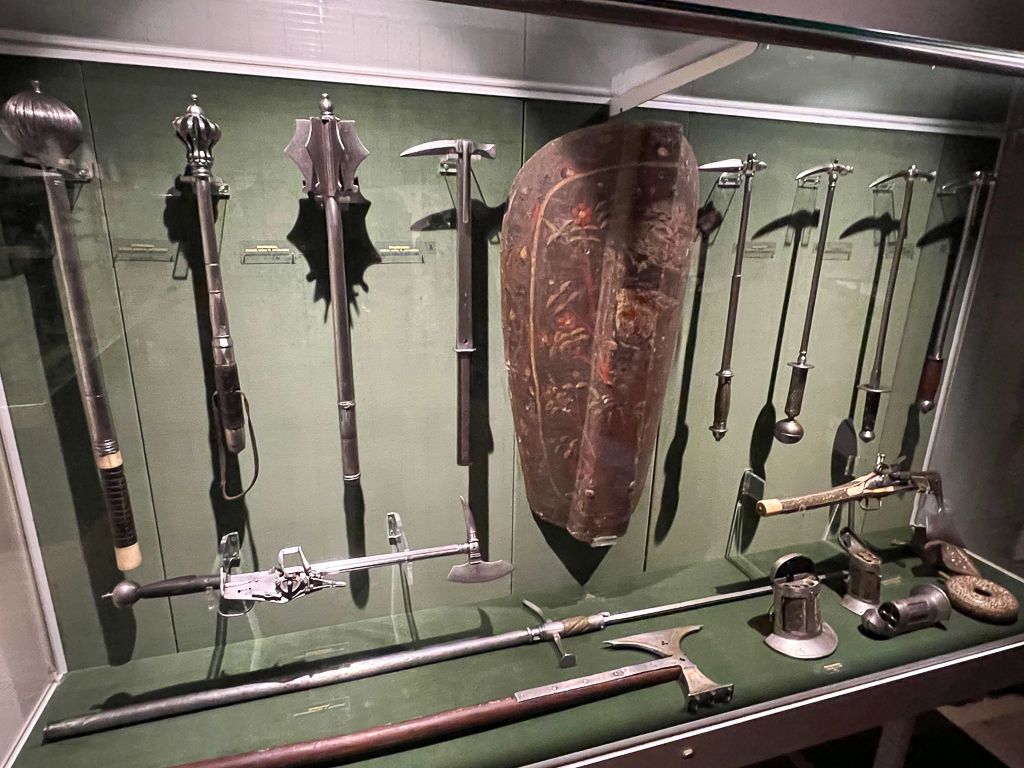
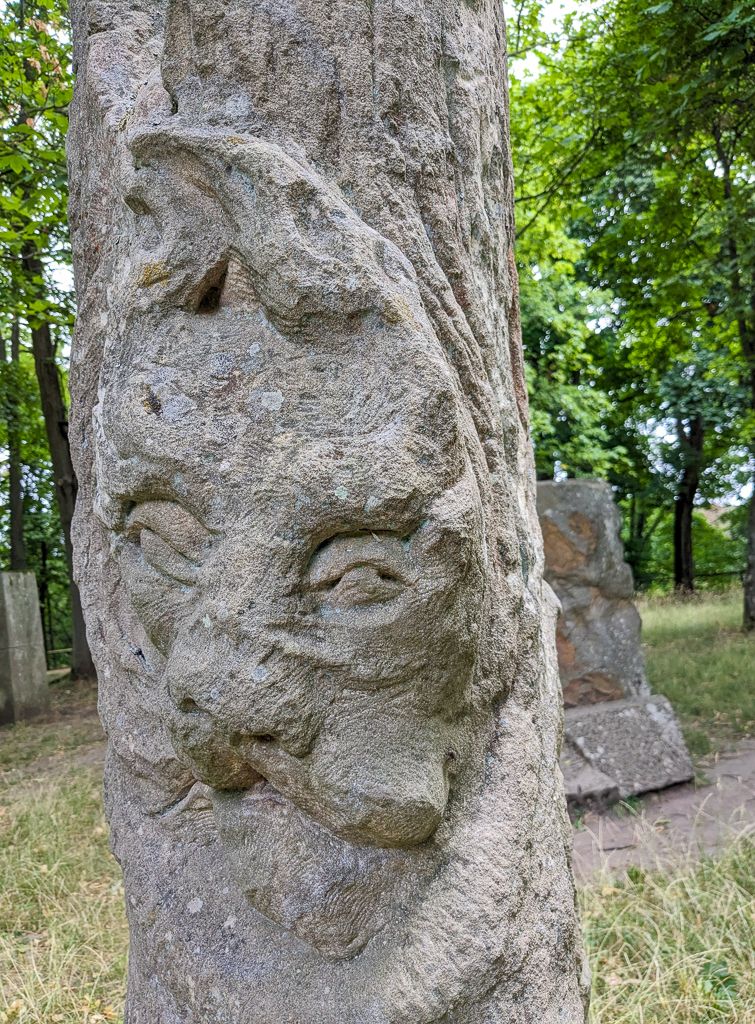
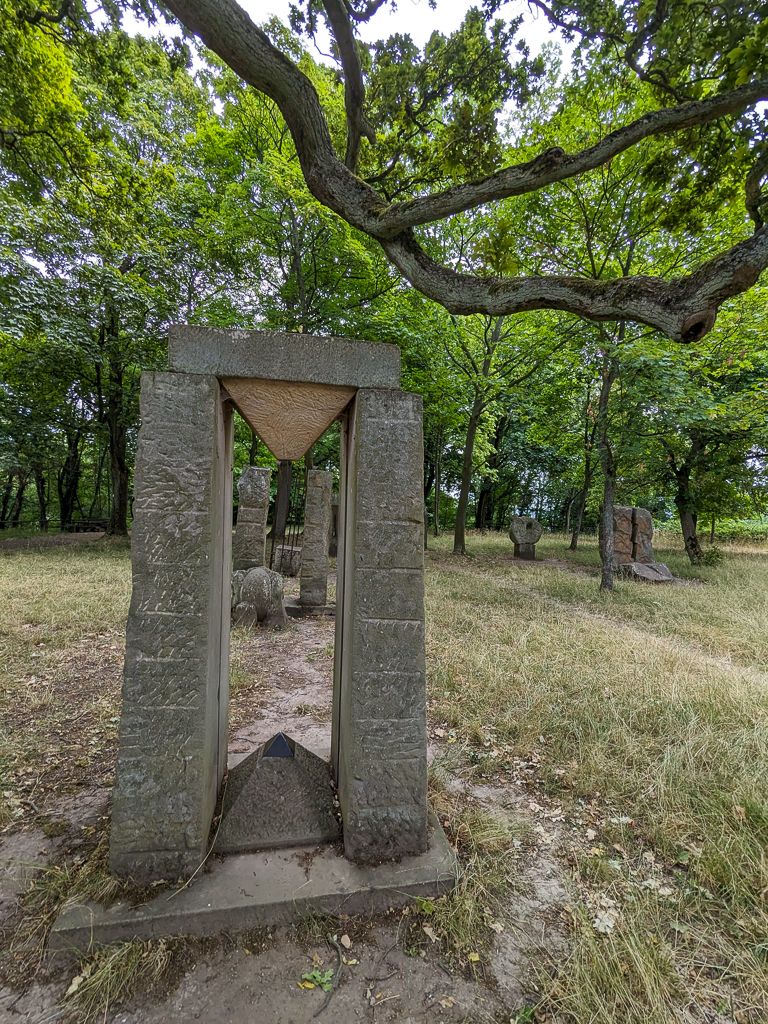
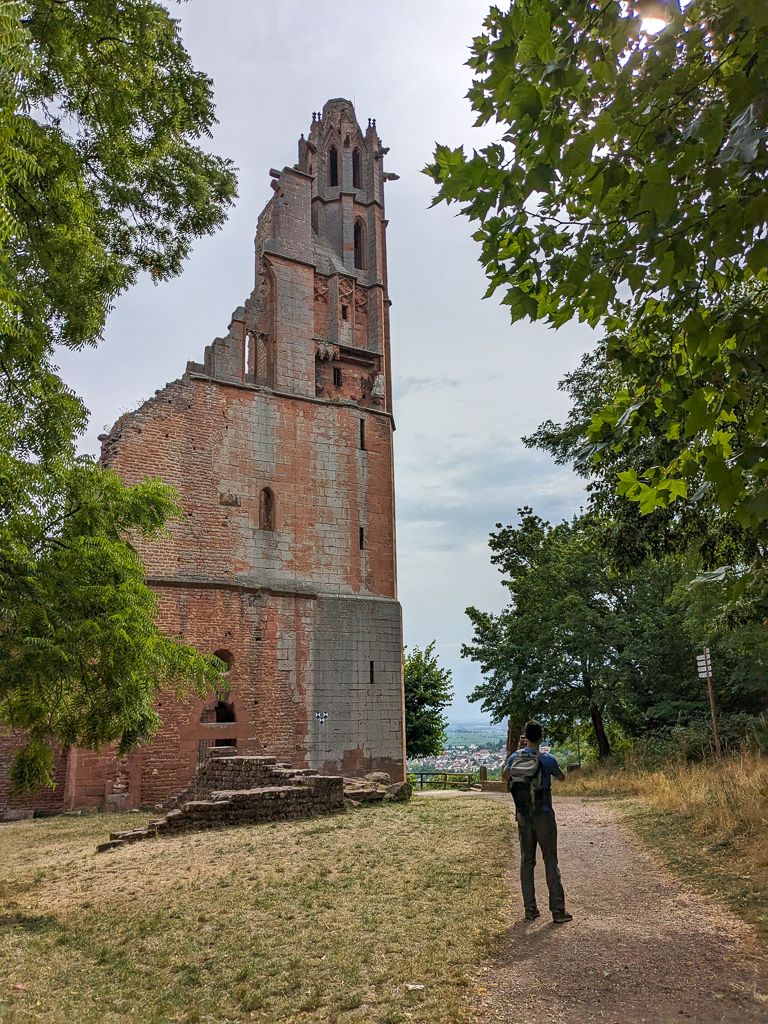
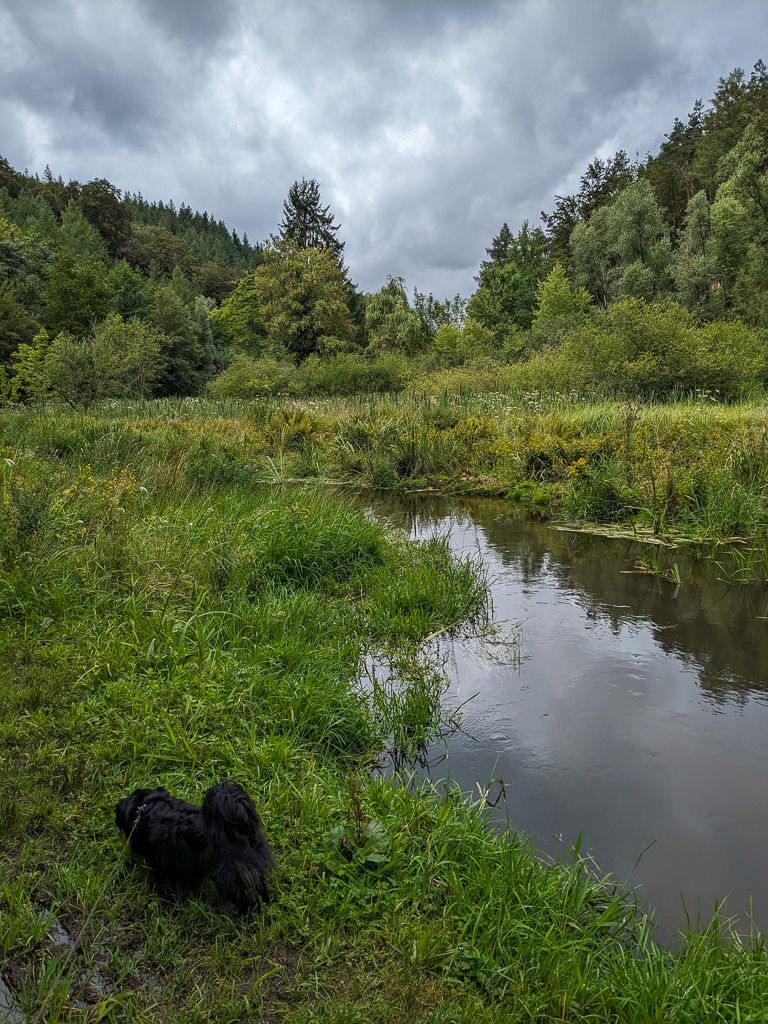
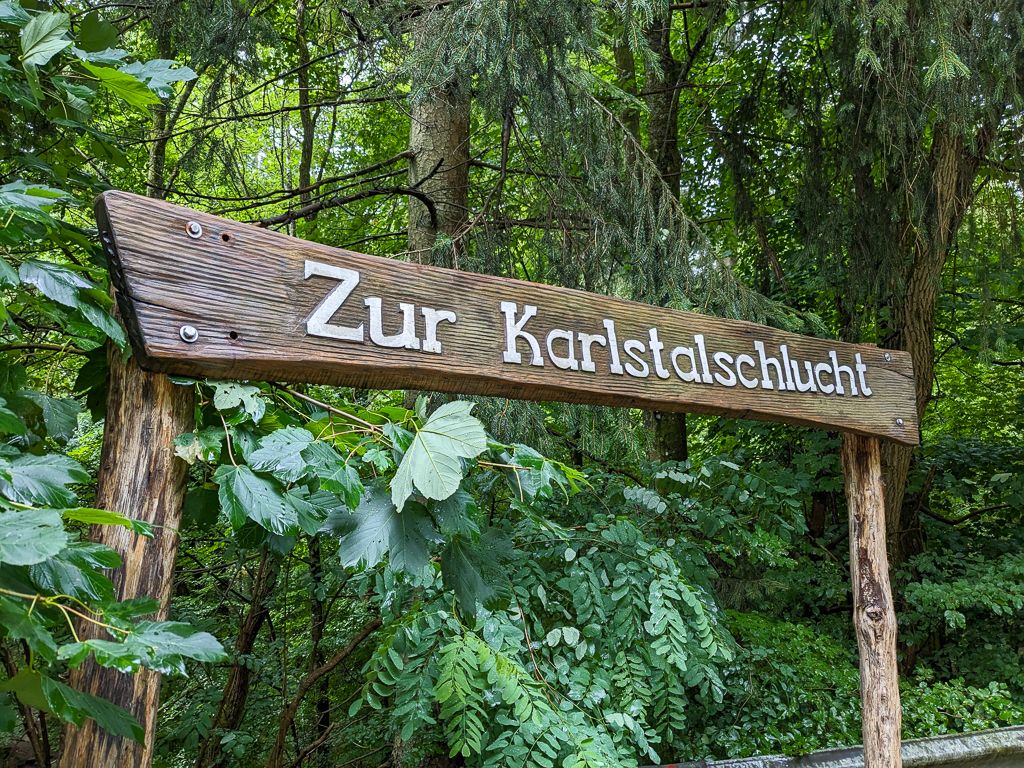
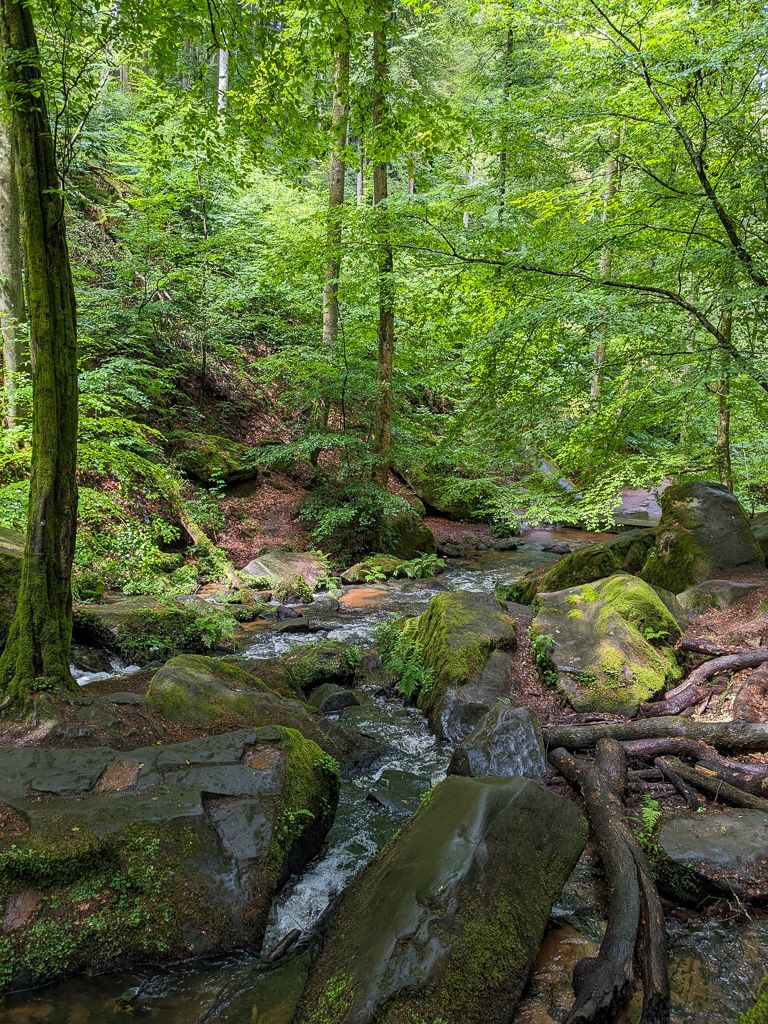
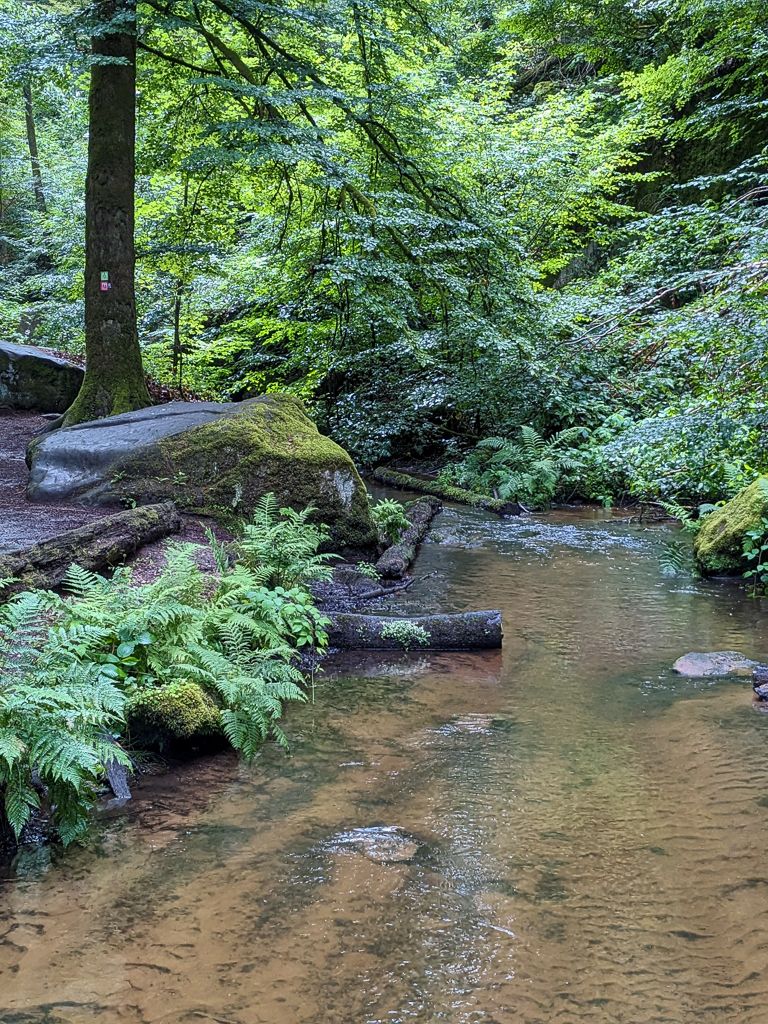
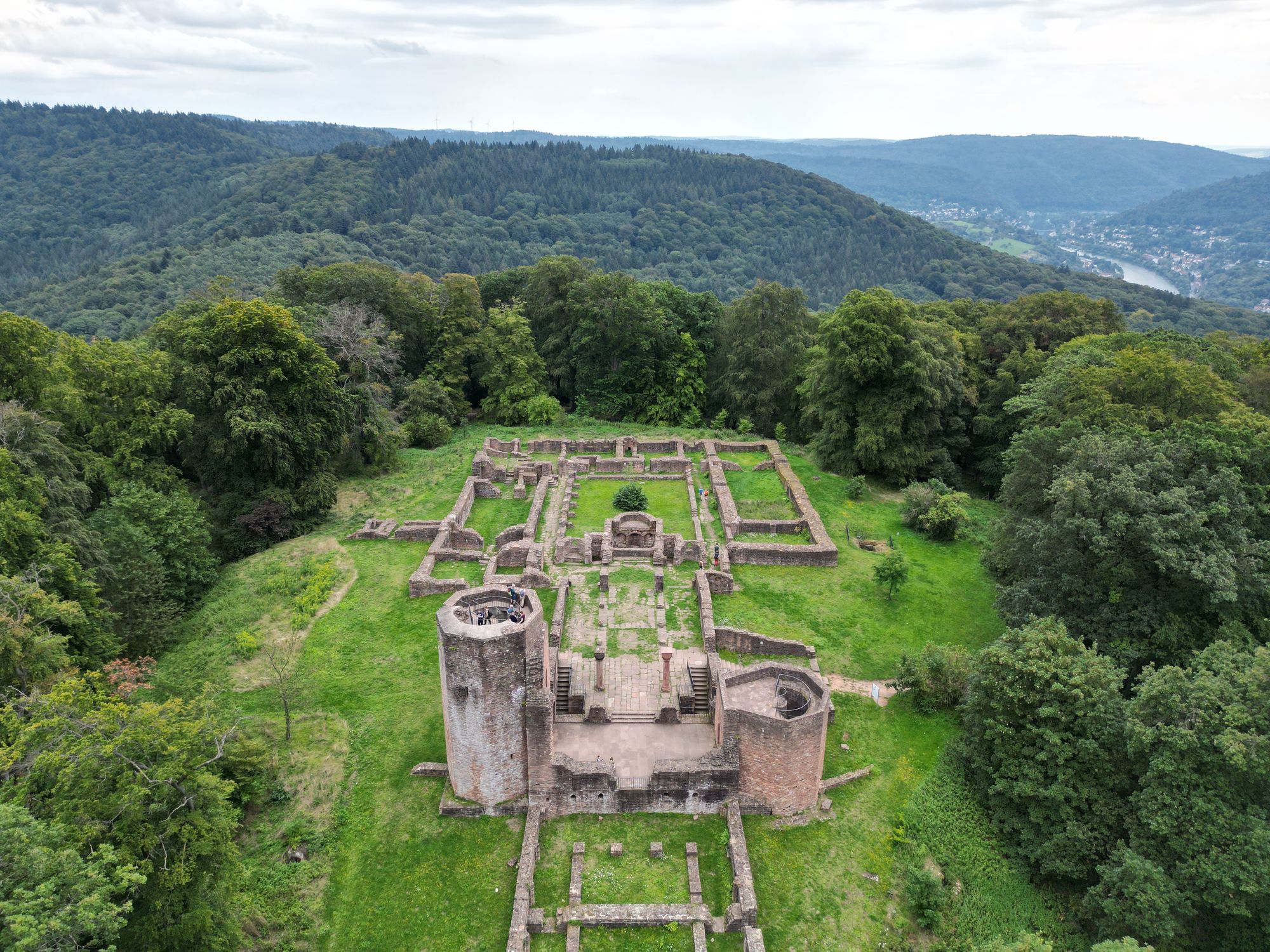
But to wrap it up, we would like to leave you with one last story. The story of Perkeo, the court jester and official keeper of the wine barrel of the Heidelberger castle. He was of particularly small stature, but was known to consume large quantities of wine, in fact, legend has it that he was capable of drinking the whole barrel. (May we remind you, that the Heidelberger wine barrel could hold thousands of liters!) A native Italian, he had gained his name by habitually responding to challenges with 'Perché no?' (Why not?). The irony of his story lies in the circumstances of his death. Despite his immense consumption of wine, it is believed that he died by drinking a glass of contaminated water.
What's the moral of the story? In the pfälzer spirit, remember to always dilute your water to a generously poured Weinschorle, just to be safe. Zum Wohl! (Prost, Salute, and bottom's up).
